The Ultimate B2B Sales Guide To Help Your Business Flourish
Do you know that 69% of prospects think the first call doesn’t meet their business needs? It does sound disappointing. This means you must put in the effort to take your organization’s sales to the next level. You are at the right place if that’s what you want. This B2B sales guide has everything you need to know about B2B sales, from the basics of sales to building a process for your business to using automated tools effectively.
Whether you’re a beginner or a pro, this guide will help you learn how to succeed in B2B sales.
So, keep reading till the end!
Table of Contents
- What Is B2B Sales?
- B2B vs B2C Sales: What’s The Difference?
- Top B2B Sales Facts
- Inside Sales vs Outside Sales
- What Are Upselling, Cross-Selling And Relationship Selling?
- Step By Step B2B Sales Process
- What Is B2B Lead Generation?
- What Are The Top B2B Sales Channels?
- What Are The Top B2B Sales Skills Reps Should Have?
- How To Do Sales Onboarding Effectively?
- How To Calculate Sales Commission?
- Why Is Sales Coaching Important?
- What Is The Difference Between A B2B Sales Funnel & Sales Pipeline?
- How Is A B2B Sales Process Different From A B2B Sales Methodology?
- Strategies to Improve B2B Sales
- How To Overcome Sales Objections?
- How To Ask Probing Sales Questions?
- Key Sales Tips For Reps
- What Are The Regulatory Laws For Cold Outreach?
- B2B Sales Mistakes to Avoid
- B2B Sales Automation Tools
- The Future of B2B sales
What Is B2B Sales?
B2B (business-to-business) sales refers to sales made between two businesses, instead of between a business and an individual consumer. However, it is worth noting that B2B sales typically involve larger, more complex transactions than B2C (business-to-consumer) sales.
As such, it requires a different approach for successful sales. B2B sales often require establishing relationships with buyers and understanding their needs, as well as developing a thorough understanding of the products or services being offered. It also involves dealing with multiple stakeholders in the decision-making process. B2B sales is an important part of the business world and can be a lucrative source of income.
To succeed in B2B sales, it is essential to understand the customer’s business model and needs to create an effective sales pitch. Additionally, having strong relationship-building skills and the ability to negotiate effectively is essential for success. B2B sales can be a lucrative career, and it can be both rewarding and challenging.
Let’s move ahead in this B2B sales guide.
B2B vs B2C Sales: What’s The Difference?
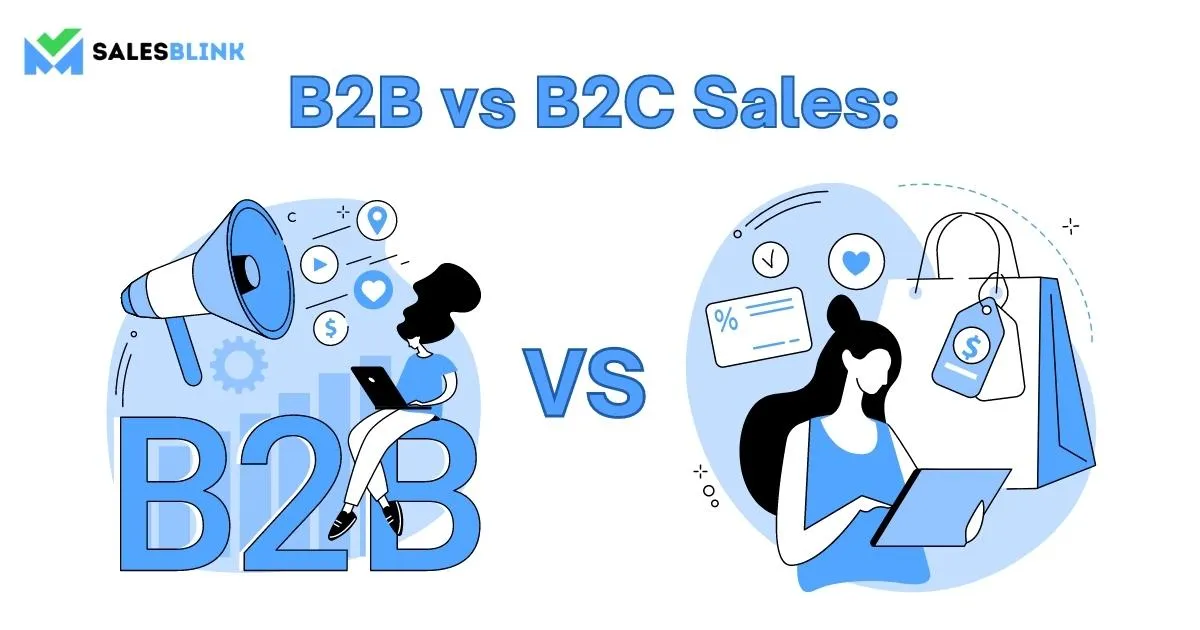
B2B and B2C are two different types of business models. The main difference between them is the types of customers they serve. B2B companies typically provide services or products to other businesses, while B2C companies provide products or services directly to consumers.
B2B companies often deal with larger clients, which can mean more stability and reliable income. However, they may also require more complex products or services and higher customer service standards.
On the other hand, B2C companies typically have more direct contact with customers, allowing them to respond quickly to customer feedback and build loyalty.
B2B sales typically involves longer sales cycles than B2C sales, as businesses often need to go through a more rigorous decision-making process. On the other hand, B2C transactions are typically shorter, simpler, and involve smaller orders.
Top B2B Sales Facts
B2B sales can be a complex and challenging field, requiring a deep understanding of customer needs and the ability to build strong relationships with business partners. Here are some key facts about B2B sales that can help you succeed in this ever-evolving industry:
- As per 31% of B2B professionals, social selling has helped them to develop deeper client relationships.
- 80% of prospects like to communicate with sales reps via email.
- Over 50% of your clients don’t seem to be a good fit for your product or service.
- Two-thirds of salespeople reached out to just 250 leads or less per year which is only about one per day!
- Before reaching out to a sales rep, an average of 41% of B2B customers always read at least 3 pieces of content about the product or service in concern.
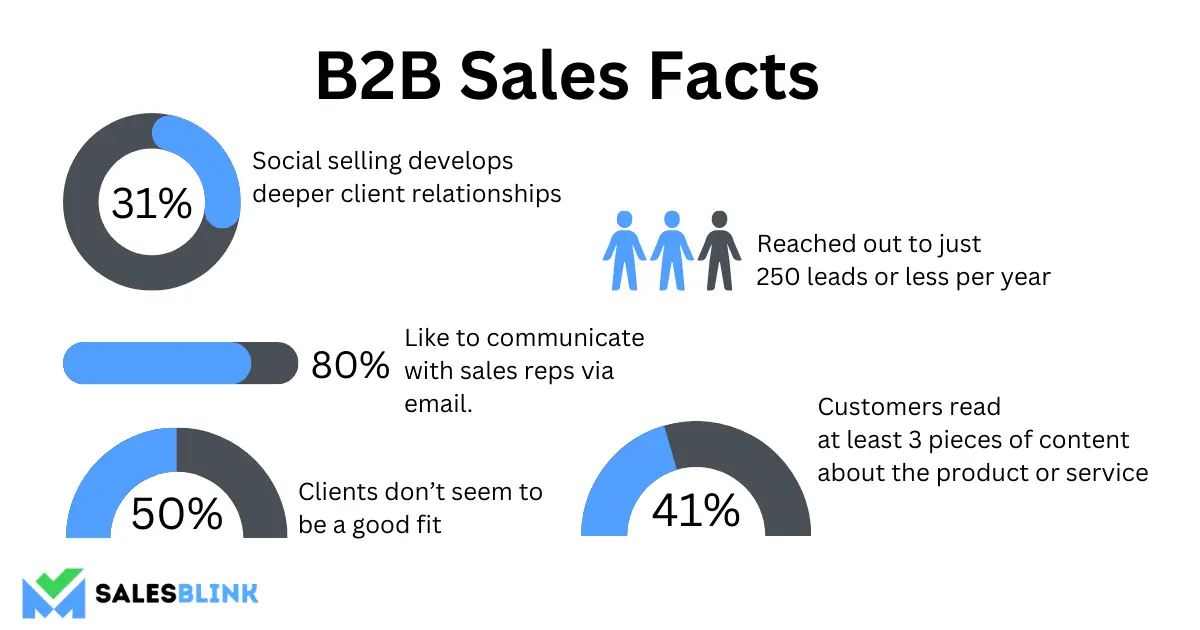
By keeping these facts in mind, you can ensure that you’re taking the right approach to B2B sales and maximizing your success in this increasingly competitive market.
There’s a lot to learn in this B2B sales guide.
Inside Sales vs Outside Sales
Inside sales and outside sales involve two different approaches to selling products and services. Inside sales typically involve making sales calls, emails, and other forms of communication from an office setting. Outside sales, on the other hand, involves physically going out to meet customers and make sales. Outside sales may offer more flexibility in terms of where and when the salesperson can work, while inside sales require reps to stay tied to an office.
Inside sales is less expensive than outside sales, as it does not require much travel or time investment. Additionally, inside sales are often more efficient, as salespeople can typically reach more customers in a shorter time. However, outside sales offers the opportunity for salespeople to develop personal relationships with customers and build trust.
Outside sales also allow salespeople to understand their customer’s needs better, as they can gather more information by speaking directly with them. But, ultimately, the right approach for any organization depends on the type of product or service they are selling and their customer base.
Let’s not move ahead in this B2B sales guide.
What Are Upselling, Cross-Selling And Relationship Selling?
B2B sales involve various selling approaches, including upselling, cross-selling and relationship selling. Let’s look at each of them,
Relationship Selling
Relationship selling is a B2B sales strategy that focuses on building relationships with customers to create loyalty and long-term loyalty. It involves building trust with customers and understanding their needs, so that the salesperson can offer them the right products or services. The idea behind relationship selling is that customers are more likely to purchase from someone they know and trust. It focuses on building relationships through personal connections, such as getting to know customers on a first-name basis, offering personalized recommendations, and remembering important details about their past purchases. The goal is to establish a long-term relationship with customers, so that they are more likely to become repeat customers and even refer friends and family.
Upselling
Upselling in B2B sales is a technique used by salespeople to increase the value of a sale. It involves offering the customer additional products or services that build on the original purchase. However, you do upselling ideally after you win over the customer, and they are more open to considering additional items or services.
The best B2B upselling strategy is to focus on the customer’s needs and how the added products or services will benefit them, rather than just trying to make the sale. By understanding the customer’s needs and offering customized solutions, upselling can be a powerful tool to increase sales and customer satisfaction.
Cross-Selling
Cross-selling in B2B sales is the practice of offering related products or services to existing customers. It is a way for businesses to increase revenue by leveraging their existing customer base.
For example, if a company sells office furniture, they could cross-sell related items such as filing cabinets and laptops to their existing customers. This allows them to increase their revenue without acquiring new customers.
Cross-selling can also help businesses build stronger relationships with their customers, as they are showing they understand their needs and can provide solutions. It can also help businesses increase their market share, as customers may purchase multiple items from the same company. Cross-selling is an important part of any B2B sales strategy, and it can be an excellent way for businesses to increase revenue and build relationships with their customers.
Step By Step B2B Sales Process
Knowing the ins and outs of a successful B2B sales process can be a game-changer for any professional. But it’s not always easy to figure out where to start. So to help you, let’s look at the sales process in a step-by-step manner in this B2B sales guide.
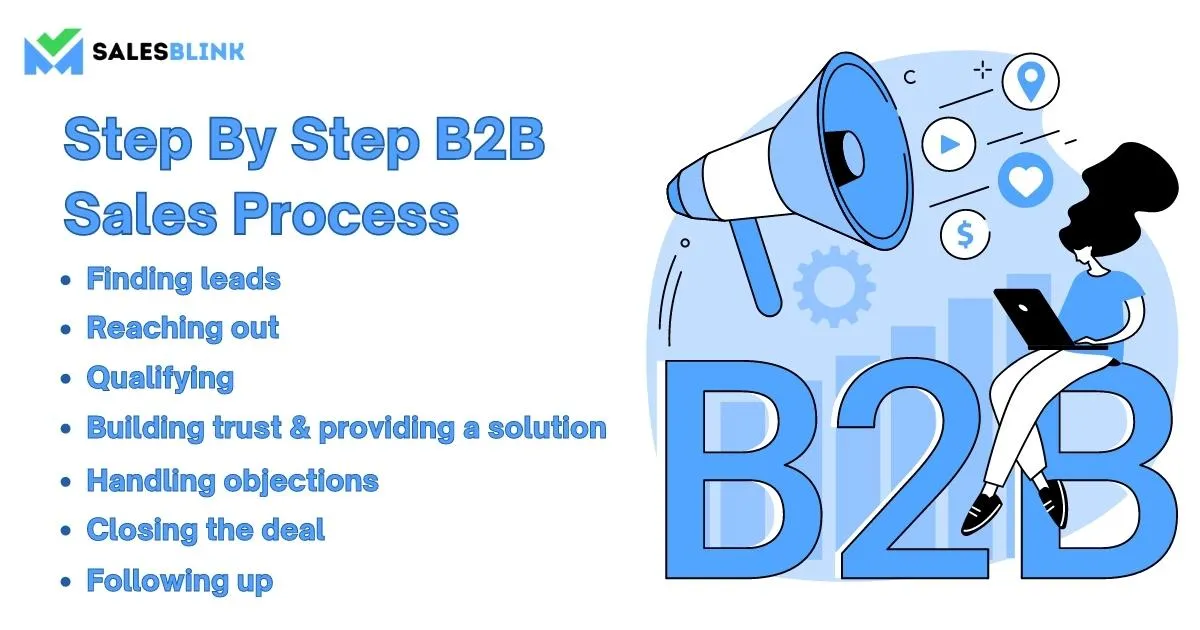
1. Finding leads
Finding leads in B2B sales can be challenging, but it’s not impossible. The key is to be methodical and organized in your approach. Here are a few tips for finding leads in B2B sales:
- Search for industry-specific websites and forums where potential customers discuss their needs.
- Use social media to find conversations about industry-specific products and services.
- Attend events such as trade shows, conferences, face-to-face meetings with potential customers.
- Utilize online directories and search engines to identify companies needing your product or service.
- Build relationships with other companies, such as vendors and resellers, who can refer potential customers to you.
The above are the traditional methods. You can shift to automation and use LinkedIn Sales Navigator, Lusha, etc. to find prospective companies that belong to your niche and get their contact details with a click of a button. Your list will be ready in no time, and you can prepare yourself to reach out, which is the next step.
By finding leads in B2B sales, you can increase your chances of making successful sales and growing your business.
2. Reaching out
Reaching out to prospects can be daunting, but it is key to success in sales. First, you must craft an effective message that will resonate with your prospects and get their attention. This could be a cold email, LinkedIn message, or a phone call. When reaching out, keep it brief and focus on the benefits of your offering, rather than trying to hard sell. Then, if you make a good impression and your prospects are interested, you can set up a meeting to discuss the details. With the right approach, you can get your message across.
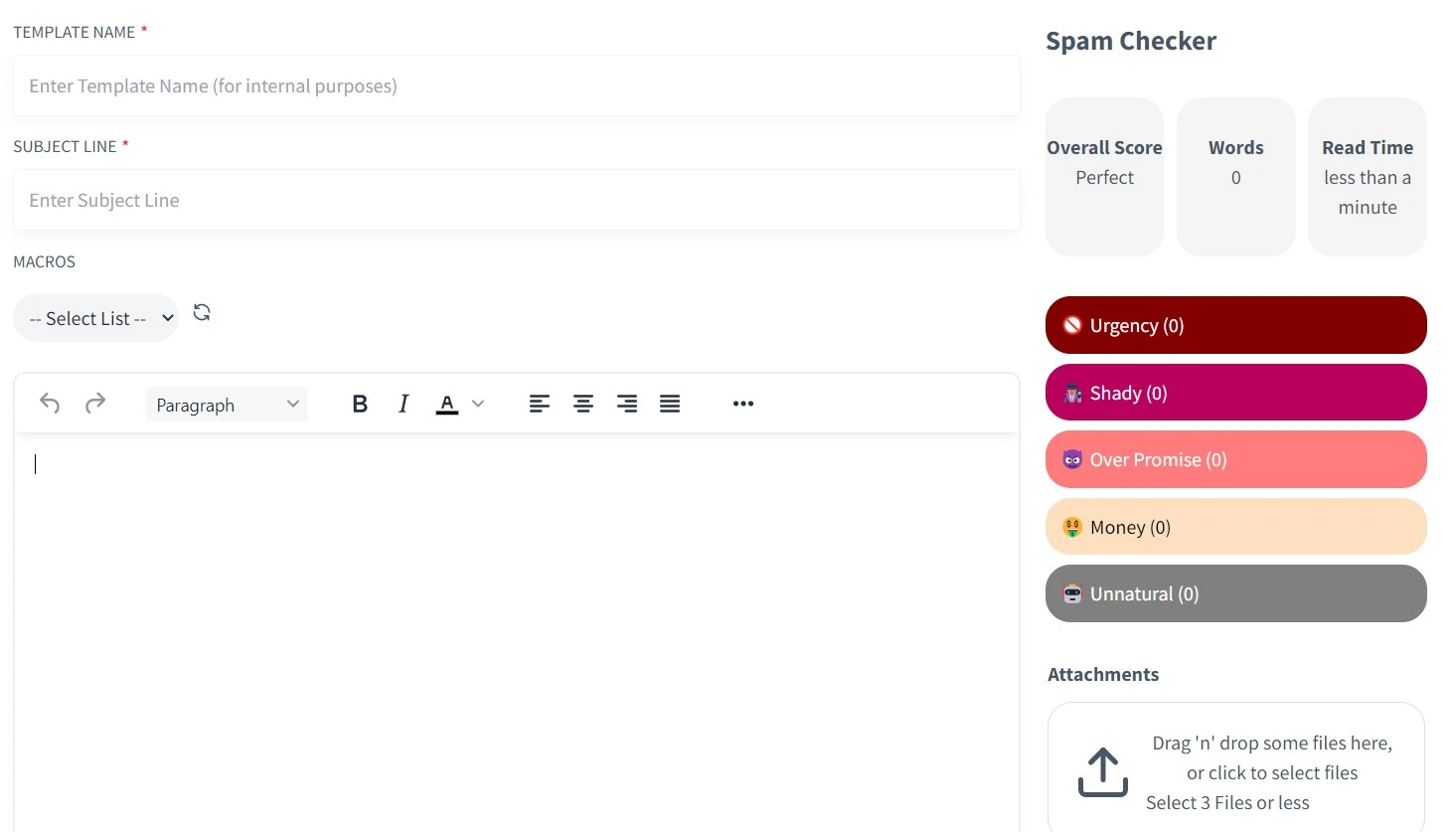
3. Qualifying
Qualifying prospects in the sales process is essential to ensure a successful sale. The goal is to identify your prospects with the greatest potential to become a customer. During the qualifying process, it is essential to ask key questions to gather the necessary information to help you make an informed decision.
Start by asking questions about their budget, timeline and decision-making process. It is also essential to determine their needs and expectations for the product or service. Then, take the time to discuss your value proposition and explain how it will benefit them.
Finally, don’t forget to assess their level of interest and commitment.
When done properly, the process of qualifying prospects will help you focus your efforts on customers that have the potential to become long-term customers.
4. Building trust & Providing a Solution
After qualifying customers, the next step is to build trust and offer your product or service as a solution to the prospect. Start by being transparent and honest about your product or service and its benefits. First, give potential customers a clear, concise explanation of the value you offer. Secondly, use references, testimonials, and case studies to show that your product or service has earned the trust of other customers.
5. Handling objections
When handling objections in the sales process, it is important to remain professional and courteous. Here’s how you can go about it,
- Listen to the objection carefully and empathize with the customer. Let the customer know that you understand what they are saying and that you appreciate their feedback.
- Ask open-ended questions to understand the objection better and probe for the real issue.
- Present the customer with specific solutions or alternatives that address their objection.
- Be sure to follow up with the customer to ensure their satisfaction and build a lasting relationship.
Following these steps can create a positive, successful experience for you and the customer.
6. Closing the deal
The closing step of the sales process is the most essential part of the entire process. It is the time when you finish handling the objections and attempt to wrap up the sale, convince the customer to commit and make their purchase. In this step, reviewing any return policies and ensuring the customer feels comfortable with their purchase is also important. You should also thank the customer for their time and ask if they have any other questions. Once the customer has committed to the purchase, create a plan of action and give them the timeline for purchase and delivery.
7. Following up
The process of closing a sale is only one part of the overall customer relationship. After the sale, it is important to follow up with the customer to ensure they are satisfied with their purchase.
First, thank the customer again for their purchase and confirm the sale details. Then, ask if they have any questions or need anything else. Offer a follow-up service such as a warranty or additional customer support.
Secondly, stay in touch with the customer. Send them emails or messages to check in on their satisfaction and to let them know about any new products or services that may be of interest. Additionally, survey the customer after the purchase and ask them to provide feedback on the product or service.
Finally, thank the customer for taking the time to provide feedback. Building relationships with customers after the sale will keep them returning for future purchases and help build loyalty.
Let’s now move ahead in this B2B sales guide.
What Is B2B Lead Generation?
B2B lead generation involves finding potential customers for a company’s products or services. It involves researching and understanding the needs of potential customers, identifying potential leads, and then nurturing those leads to convert them into paying customers.
Lead generation is an essential part of any B2B business, but it can be challenging to do it effectively.
You can generate leads through a combination of online and offline marketing techniques, such as search engine marketing (SEM), email marketing, content marketing, and social media marketing. The goal of lead generation in B2B is to generate quality leads that are likely to become paying customers. Companies that are successful at B2B lead generation usually have a well-defined strategy in place and an experienced team of professionals to execute it.
The key to successful lead generation is creating a targeted approach that reaches potential customers in the right place and at the right time. One way to do this is using a combination of search engine optimization (SEO) and content marketing to ensure that your website and other web-based content are visible to potential customers.
You can also use email campaigns, pay-per-click advertising and social media to reach potential leads.
Finally, it would help if you considered investing in lead-nurturing software that can help automate collecting leads and qualifying them. By taking a comprehensive approach to B2B lead generation, you can ensure that your business is getting the most out of its efforts.
What Are The Top B2B Sales Channels?
The top B2B sales channels depend on the needs of the business and the target market. A good place to start is by determining which channels are best suited to reach potential customers. The top channels to increase B2B sales include the following:
Direct Sales
Direct Sales is a sales channel focusing on contacting potential customers and convincing them to purchase a product or service.
A customer purchasing a smartphone from Samsung’s website is an example of direct sales.
You can break down direct sales further into two types – inbound and outbound sales.
Inbound Sales
Inbound sales is a type of strategy that focuses on attracting customers to a business rather than actively seeking them out. Inbound sales aim to create a relationship with potential customers by providing them with useful content, such as blog posts, videos, and webinars. This content aims to educate potential customers and build trust, so they turn to the business when they are ready to make a purchase.
Inbound sales is more passive, relying on content marketing to bring in customers. However, it is a popular strategy for businesses that want to build relationships with customers and provide them with a positive buying experience.
Outbound Sales
Outbound sales are the traditional method of sales outreach, where a salesperson actively reaches out to prospects to generate leads and close deals. This type of sales involves making cold calls, sending emails or direct mail, attending events, and networking.
Outbound sales requires a lot of effort and perseverance, as it involves direct contact with potential customers who may not always be interested in buying. However, when done correctly, outbound sales can be very effective in generating leads and helping companies grow their customer base.
Outbound sales typically involves a salesperson making an initial contact with a potential customer and then following up with them to provide information and answer any questions they may have. The goal is to eventually close the sale and turn the prospect into a customer.
Affiliate Sales
In affiliate sales, businesses partner with individuals or websites to promote and sell their products and services. The partner, also known as an affiliate, receives a commission for each sale they generate. This commission can be a percentage of the total sale, a flat rate, or even a combination of the two.
Affiliate marketing is one of the most popular sales channels, as it allows you to reach a large audience without investing heavily in advertising. It is also a great way for affiliates to make a passive income by promoting products they are passionate about.
What Are The Top B2B Sales Skills Reps Should Have?
For B2B sales, reps need skills to sell products or services to other businesses successfully. A unique set of skills is required, including building relationships with potential clients to understand their needs and finding solutions that fit those needs.
- Relationship building is essential to foster trust and credibility with potential customers.
- Strong communication and negotiation skills are a must, with effective listening. It is also essential to ask questions to understand customer needs and develop customized solutions.
- There’s the need to possess the ability to think strategically and manage time effectively. One must be able to prioritize tasks and manage multiple projects within deadlines.
- Being organized and detail-oriented can help reps to manage their workload.
- Technical knowledge is also essential to understand customer needs and develop solutions quickly.
- There’s also the need to be persistent yet tactful to ensure customer satisfaction and continued business.
- Having a strong understanding of the product or service they are selling is essential.
How To Do Sales Onboarding Effectively?
Sales onboarding is essential for any business that wants to be successful, and it’s important to get it right. Let’s look at that now in this B2B sales guide.
Onboarding is the process of training a new salesperson to be successful in their role. The purpose of sales onboarding is to quickly get new salespeople up to speed and be productive, as well as to ensure that they are using the right processes and tools for success.
Sales onboarding typically involves:
- Providing new salespeople with an overview of the company.
- Outlining the job responsibilities and expected outcomes.
- Introducing them to the sales team.
- Giving them access to the necessary resources and tools.
Depending on the company and the individual, it could also include
- Skills training
- Role-play simulations
- Access to additional resources
Sales onboarding is an essential part of any successful business as it helps ensure that new salespeople are properly equipped to do their job and contribute to the team’s overall success.
It is time to learn about creating it in this B2B sales guide.
1. Create a plan
The first step is to create a sales onboarding plan that outlines what you need to do and when. This should include each team member’s role, timeline, goals, and resources available.
2. Train Reps
Once the plan is in place, it’s time to bring the new sales team on board. This should include providing them with training on the company’s products and services, customer relationship management, and sales process. It should also include teaching them about company culture and expectations.
3. Provide continuing support
It’s important to provide ongoing support and feedback to ensure that the sales team can continue to grow and develop. With the right onboarding plan in place, the sales team will be well-equipped to hit their targets and drive success for the business.
How To Calculate Sales Commission?
Sales commission is an essential factor in determining your income as a salesperson. The commission rate should be set out in your contract and agreed upon by both parties. To calculate your sales commission, you must first identify the commission structure.
The commission can vary from a percentage of the total sale to a fixed fee per sale or a reward.
There are different commission structures, such as base salary plus commission, straight commission plan, relative commission plan, absolute commission plan, straight-line commission plan, tiered commission plan, and many more.
The calculation depends on the sales commission structure. To learn more, you can read this blog post – Sales Commission Structures.
Why Is Sales Coaching Important?
Sales coaching is a powerful tool that many companies use to enhance their sales performance. It involves a mentor or coach working with individual sales representatives to help them become more effective in their job. Through sales coaching, sales representatives are provided with the knowledge, skills and motivation they need to reach their fullest potential. This is possible through personalized guidance, advice and support.
Sales coaching looks at the sales strategy of reps and helps them develop the skills they need to improve. It involves breaking down individual sales tasks into manageable goals, developing the confidence and attitude required to succeed, and providing ongoing feedback and support.
Sales coaching is important because it helps salespeople succeed in their roles. By working with a coach, a salesperson can develop the skills and strategies they need to find success. Sales coaching helps salespeople understand their strengths and weaknesses and the techniques they can use to close deals and increase their sales figures. It also helps salespeople to identify areas where they need to focus their efforts and develop their skills.
This helps retain top talent. By providing mentoring and support, sales managers can help reps become more successful and motivated. This increases their performance and creates a more positive work environment.
Sales coaching also allows salespeople to learn from their coach’s experience, who can provide advice and guidance on how to succeed in the sales process.
Additionally, sales coaching can help sales representatives keep up with the latest trends and developments in the industry, helping them stay competitive.
By investing in sales coaching, companies can ensure that their sales reps have the skills and knowledge necessary to succeed.
What Is The Difference Between A B2B Sales Funnel & Sales Pipeline?
It is now time to know about the difference between sales funnel and pipeline in this B2B sales guide. The terms sales funnel and sales pipeline are often used interchangeably, but they are actually quite different. A B2B sales funnel visually represents the customer journey from awareness to purchase.
It shows each step of the process and the rate at which customers progress from one stage to the next. The funnel starts at the top with the first point of contact and narrows as the customer moves further down and closer to purchasing.
The goal of the ultimate B2B sales funnel is to identify areas of improvement in the customer journey and optimize each step of the process.
A sales pipeline, on the other hand, is a more linear representation of the sales process. It tracks individual deals through each stage of the process and provides an overall picture of where the deals are in the pipeline. It typically begins with a prospect, follows the process through various stages, such as lead generation and qualification, and ends with a sale.
The goal of a sales pipeline is to identify deals that need attention, prioritize them, and make sure they are moving through the pipeline promptly. It is a more strategic approach to sales with a focus on planning and goal setting.
The main difference between a sales funnel and a sales pipeline is that a sales funnel focuses on the customer’s journey, while a sales pipeline focuses on the progress of the sale. However, both are important components of the sales process and should be used in conjunction with one another to ensure success.
How Is A B2B Sales Process Different From A B2B Sales Methodology?
You can sum up the difference between the sales process and sales methodology in one word – intent. Sales process outlines the stages of the sale and the steps taken for each stage. Sales methodology, on the other hand, is the philosophy that guides how you create and manage a sales process.
Sales process typically includes the initial contact with the customer, followed by the qualification of the customer, product presentation and the closing of the deal. On the other hand, sales methodology is more focused on the approach taken when engaging with the customer to achieve the desired outcome.
Sales methodology outlines how salespeople should interact with customers, how to identify customer needs, and how to develop solutions that meet those needs. It ensures salespeople have a consistent and successful approach to sales, regardless of individual background or experience. A sales methodology provides an overarching framework that outlines the best practices and processes that should be employed when working with customers. In contrast, a sales process provides more detailed guidelines to ensure a successful sale.
The different sales methodologies include SPIN selling, NEAT selling, conceptual selling, Challenger sale, solution selling, MEDDIC and many more. Apart from these, there is also customer-centric selling that revolves around the customer and understanding their needs. It involves tailoring the solution for customers to increase their chances of success.
A successful salesperson should have a good understanding of both the sales process and the sales methodology to close deals faster.
Strategies to Improve B2B Sales
It is time to know about the top strategies in this B2B sales guide,
1. Focus on sales enablement
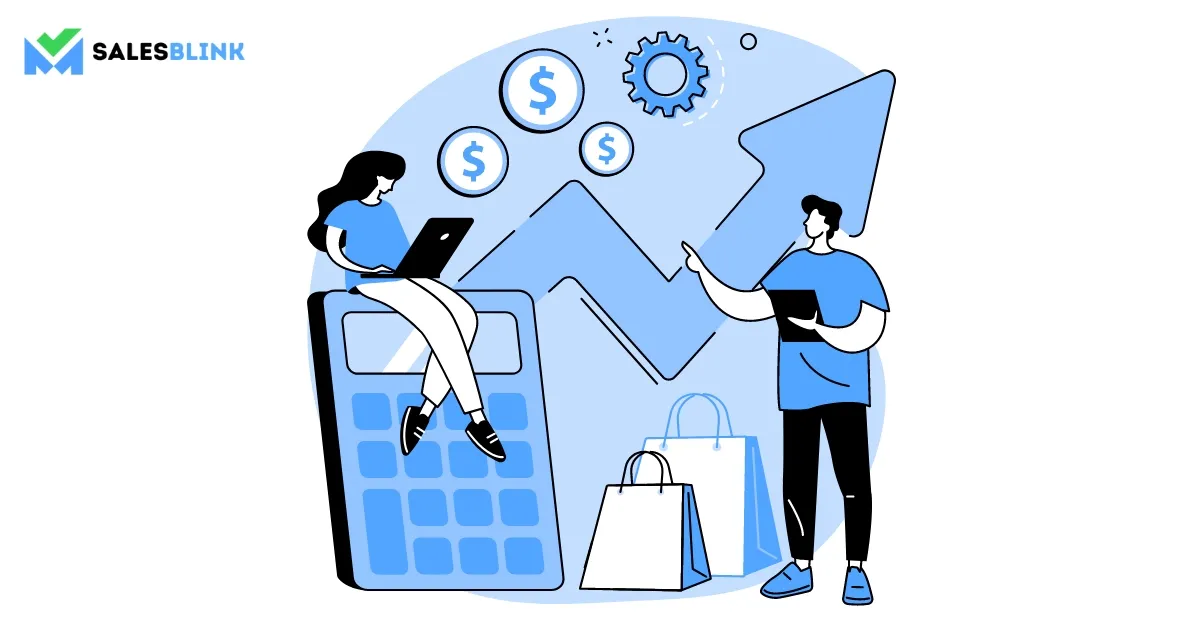
Sales enablement is an important concept in sales and marketing. It’s all about providing salespeople the tools and resources to succeed. This includes product training, customer data, sales processes, and more. By providing salespeople with the right information and support, they can make informed decisions and close more deals.
To focus on sales enablement, companies need to have a clear strategy in place. This should include goals for the sales team, as well as a plan for how to achieve these goals. Companies also need to invest in the right tools and resources. This could include CRM software, marketing automation platforms, and analytics tools.
Finally, companies should provide regular training and support to their sales teams. This could include one-on-one coaching sessions, workshops, webinars, and more. Companies can ensure that their sales teams are equipped with the skills and resources they need to succeed by focusing on sales enablement.
2. Align marketing and sales teams
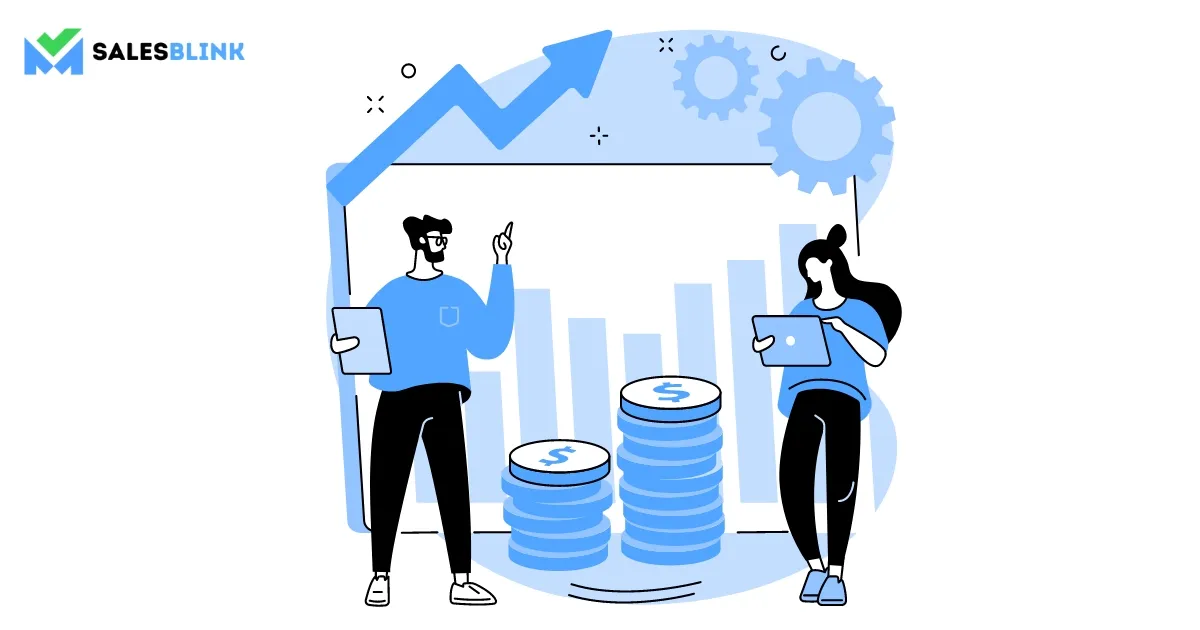
Aligning marketing and sales teams is essential for any business that wants to maximize sales.
The marketing team is responsible for gathering and analyzing data on customer needs and preferences, while the sales team is responsible for converting those leads into actual sales. By creating a feedback loop between the two teams, the company can ensure that the marketing team focuses on the right customers and that the sales team has the tools and information it needs to close deals.
To do this, the teams must be in constant communication and have a shared understanding of the company’s goals and objectives. They should also be given access to the same data, such as customer information, competitor analysis, and market trends. By fostering communication between marketing and sales teams, companies can ensure they are taking full advantage of their resources and maximizing their potential.
In addition to working together, marketing and sales teams should use data to measure the success of their campaigns. They can use this data to inform future strategies and campaigns to ensure they are always driving maximum results.
3. Create buyer personas
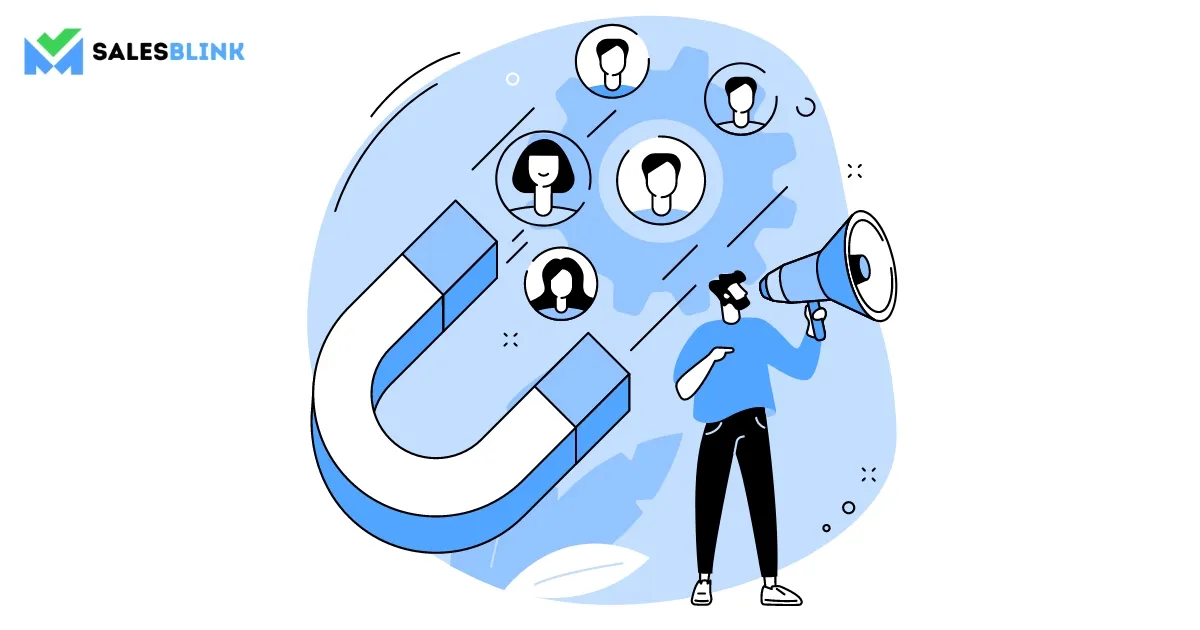
Creating buyer personas can help improve sales by better understanding the customer’s needs and wants. For the uninitiated, a buyer persona is a semi-fictional representation of your ideal customer, which is created through research, interviews and market analysis. When creating buyer personas, you must consider the customer’s demographics and the challenges they face. By understanding your customer’s needs, you’ll be better able to present them with a solution.
All in all, creating buyer personas is a great way to improve sales and ensure customer satisfaction.
4. Nurture leads
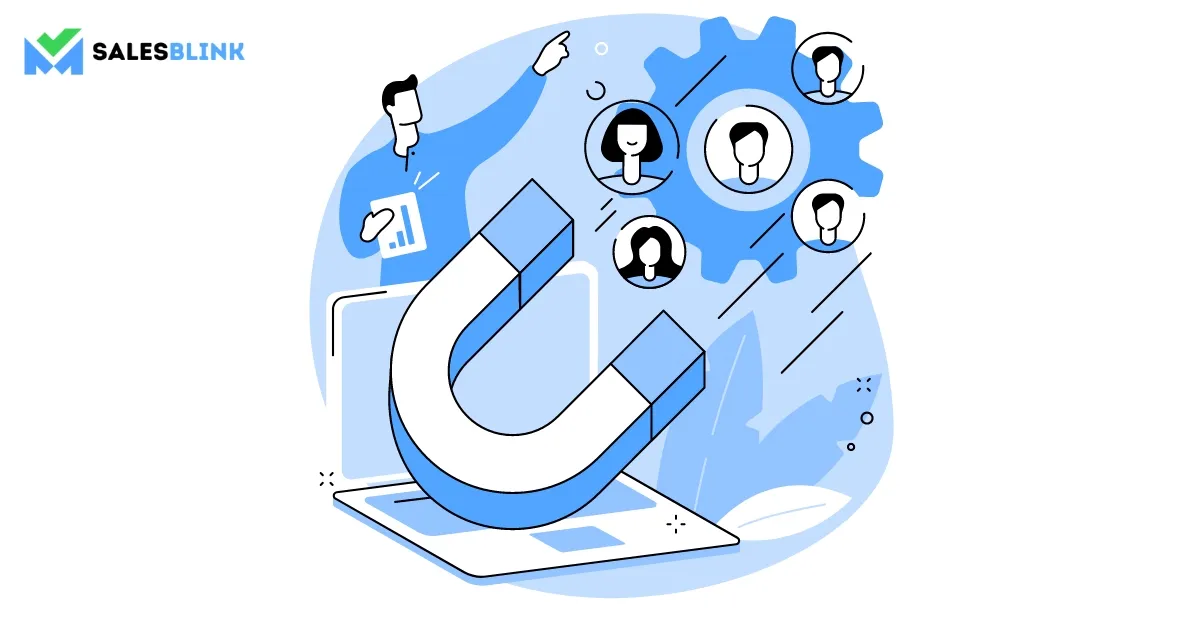
Nurturing leads is an important part of any successful sales process. It involves building relationships with potential customers by providing valuable information and helping them to resolve any questions or issues they may have. To nurture leads effectively, it is important to create a personalized experience for each lead. This means providing relevant content that speaks to their needs and interests. You can do this through email campaigns, targeted ads, personalized web pages, and more. With the right strategies in place, nurturing leads can help you improve sales and build lasting relationships with customers.
5. Think long term
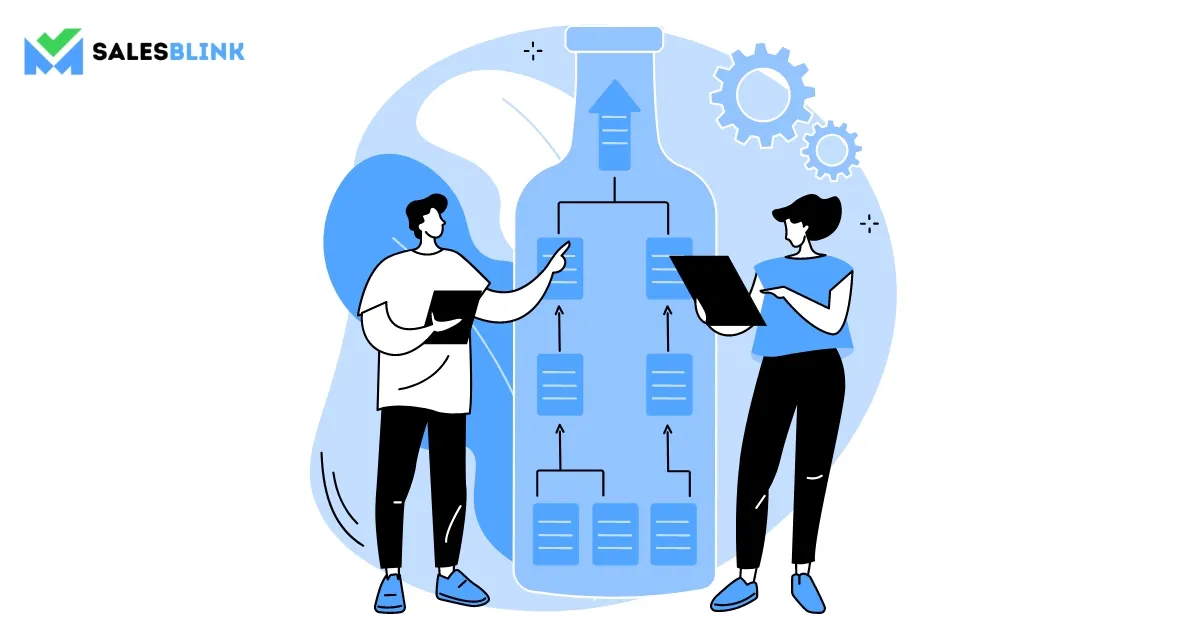
If you want to improve sales, it is important to be far-sighted and think beyond the immediate future. This means considering how changes in the market, technology, and customer behavior can affect your business. It also means having a long-term plan for how you will grow and expand your business over time.
One way to think long-term is to focus on building relationships with customers. This could involve staying in touch with them through newsletters, social media, or even direct mail. Another way is to invest in new technology that could give you a competitive edge in the future. Finally, you should pay close attention to trends in the market, such as changes in consumer tastes or shifts in the economy, so that you can adjust your strategy accordingly.
6. Focus on selling solutions instead of products
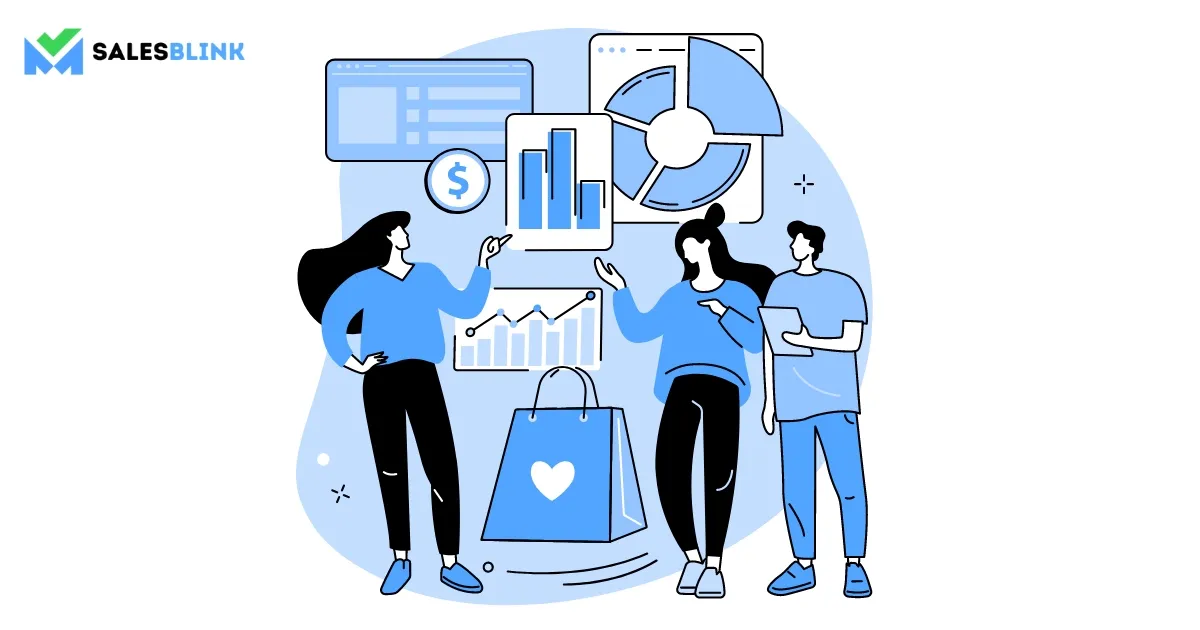
When it comes to sales, most people tend to focus on the product they are selling. But if you really want to make an impact, it’s important to focus on selling solutions instead. This means understanding your customer’s needs and then figuring out how the product or service can best meet those needs. It’s also important to think beyond the immediate need and look for ways that your product or service can provide long-term value as you saw above. By taking the time to understand your customer’s problem and presenting them with the best solution, you will be better able to close sales and build strong relationships with your customers. Selling solutions instead of products is a great way to stand out from the competition and ensure repeat business.
7. Follow-up
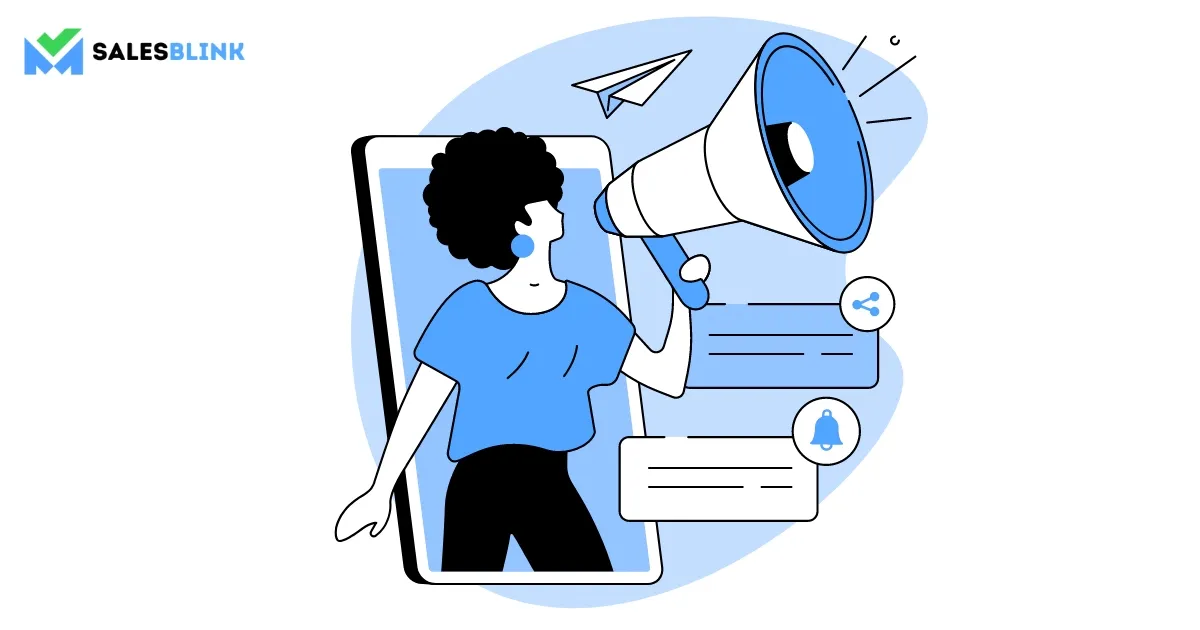
If you want to improve your sales, following up is essential. The key is to reach out to potential customers at the most suitable time, with the right message. This means setting up a process for following up quickly and consistently.
To start, you should automate follow-up messages after a certain amount of time has passed since the initial contact. Make sure these messages are personalized and relevant. You can also use social media to follow up with prospects by commenting on their posts.
Also, don’t be afraid to pick up the phone and call potential customers. This shows that you’re serious about making a sale and can help build trust and rapport. Just make sure to keep the conversation short and sweet, as most people are busy and don’t have time for long calls.
By following up with potential customers in a timely and personalized manner, you can greatly improve your sales and close more deals.
8. Turn to automation
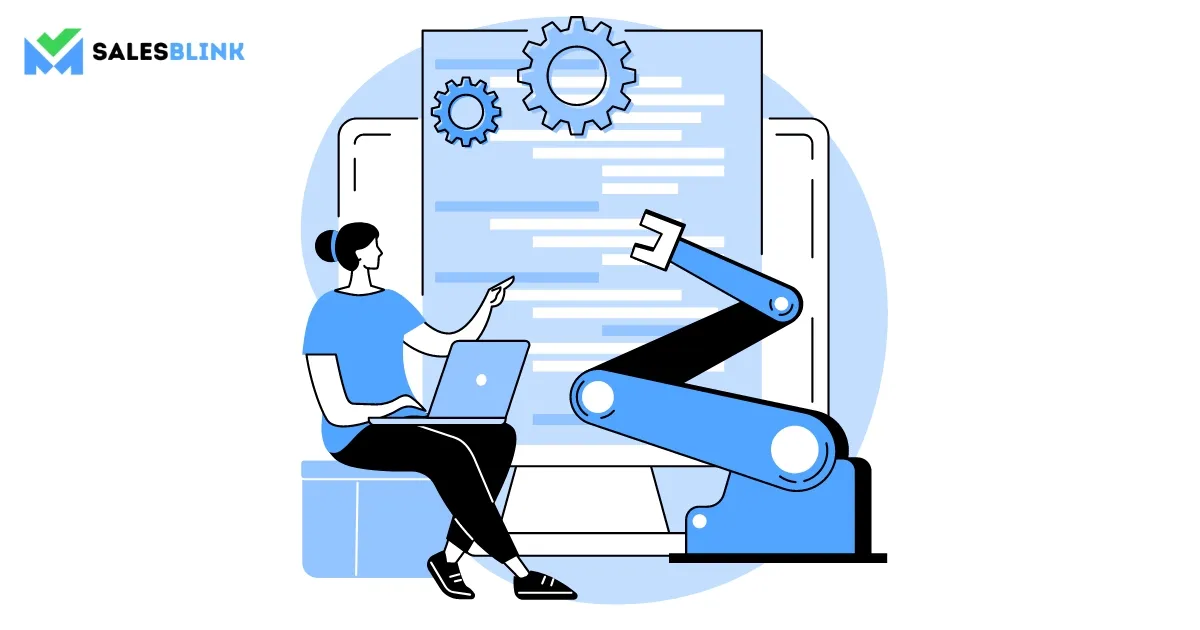
Automation is becoming an increasingly popular option for businesses looking to streamline their operations and improve sales. Automation can save time and money by eliminating mundane tasks and freeing up reps to focus on more important aspects of their jobs. It can also help businesses keep track of customer data, automate campaigns, and develop personalized offers for prospects. Automation can even help with customer service, as automated chatbots can answer customers’ most common questions quickly and accurately. By using automation, businesses can increase their efficiency, improve customer experience, and ultimately boost their sales.
You should consider using SalesBlink as it is a good idea to automate your sales process from outreach to closing.
9. Understand the prospects
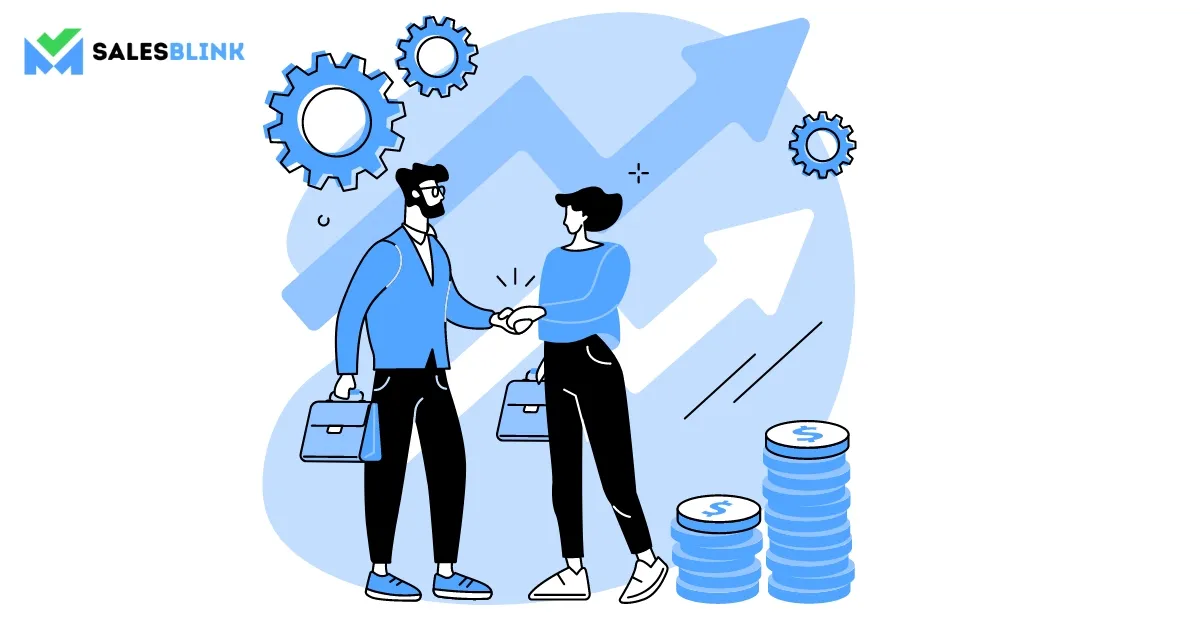
Understanding your prospective customers is crucial for improving sales. You can design a sales strategy tailored to their needs and preferences when you know who your customers are, what they need, and how they want to receive their products or services. You can also use this information to create targeted campaigns and provide better solutions. Knowing your customers also helps you stay competitive in the market.
By being aware of their changing needs and preferences, you can quickly adjust your strategy to stay ahead of the competition.
Finally, understanding your customers will give you insight into their buying behaviors and help you make more informed decisions about your sales strategy. All in all, understanding your prospective customers is essential for boosting sales and staying competitive in the market.
How To Overcome Sales Objections?
Sales objections can be a daunting obstacle for salespeople, but there are ways to manage and overcome them. The key is to address the customer’s concerns quickly and effectively.
First, you should have a good understanding of the common sales objections prior to any sales meeting. This will help you anticipate the customer’s objections and prepare for them.
Once the customer voices their objection, you should listen and be respectful of their concerns. Make sure to ask questions to get to the bottom of the objection to understand it better.
After you have a full understanding of the objection, you should be able to respond with a solution or alternative.
If the customer is not satisfied with your response, you should offer an additional solution or negotiate with the customer.
To close out the objection and move on, you should summarize the customer’s concern, remind them of the benefits of the proposed solution, and thank them for their input.
How To Ask Probing Sales Questions?
Asking probing sales questions is a critical step in the sales process. It allows you to understand a customer’s needs and determine if your product or service can meet them. In addition, probing questions can help you uncover customer insights, build relationships and uncover hidden sales opportunities.
Probing questions aim to go beyond the initial conversation and dig deeper into the customer’s needs. When asking a probing sales question, it’s important to be tactful and focus on the customer’s interests.
Start by introducing the question with a brief explanation of why you’re asking. Then, ask an open-ended question that encourages the customer to think. Avoid making assumptions and ask questions that encourage the customer to open up and reveal more about their needs.
For example, you could ask, “What is the most important factor in choosing a product like ours?” or “What challenges are you facing that our product could help solve?”.
It’s essential to do your research to ensure you’re asking the right questions. Learn as much as possible about the customer and their business before initiating the sales process. This will help you ask more relevant and effective questions.
Next, show that you’re listening to the customer’s response by asking follow-up questions and providing feedback. Listening carefully to the customer’s answers and taking notes is also important. This will help you identify any potential problems and determine if there’s a way to address them.
Finally, place the customer’s needs at the center of the conversation by summarizing the key points discussed. Asking probing sales questions requires patience and practice, but it’s a great way to build relationships with potential customers and ensure that both parties are on the same page.
Asking probing questions is an ongoing process that should continue throughout the sales process.
Key Sales Tips For Reps
Sales reps are the lifeblood of any business, as they are responsible for closing the deal and bringing in revenue. To succeed, reps need to be well-trained and have solid strategies in place to maximize their sales. Here are a few tips that reps can use to increase their sales:
1. Know customers well
Research your target audience and know their pain points. What do they need and why? Knowing your customer’s needs and wants will make it easier to sell to them.
2. Understand the product or service
Reps need to know about the features and benefits of the product they are selling. If a customer has a question, you must know the answer.
3. Set realistic goals
As a rep, you should set realistic goals, such as how much they need to sell to meet their monthly quota.
4. Think like a customer
Being a rep, you need to see the product or service from a customer’s perspective. For example, how would the customer use the product, and how can the product help them?
5. Build relationships
Customers appreciate when reps take a genuine interest in their needs. So, it would help if you also tried to build a relationship with the customer to ensure they feel comfortable and confident in their buying decision.
Following these tips will help reps increase their sales and ensure they are successful in their job. With the right strategies and knowledge, sales reps can be successful.
What Are The Regulatory Laws For Cold Outreach?
It is time to know about the main regulatory laws for cold outreach in this B2B sales guide.
1. GDPR
The General Data Protection Regulation (GDPR) is a European Union (EU) law that aims to protect the personal data of EU citizens and residents. It requires organizations to ensure the security and privacy of personal information. In addition, GDPR provides a set of rights and protections to individuals, such as the right to access and rectify their personal data, the right to be forgotten, the right to data portability, and the right to be informed about the use of their personal data.
According to the law, organizations must also obtain explicit consent from individuals before collecting and processing their data. Furthermore, GDPR requires organizations to promptly notify individuals about data breaches and any unauthorized use of their personal data.
GDPR applies to any organization that collects or processes the personal data of individuals from the EU, regardless of the organization’s location. EU’s data protection authorities, enforce compliance with GDPR. The law can issue fines to organizations that fail to comply.
2. CAN-SPAM
The CAN-SPAM Act is a US law aiming to reduce unsolicited emails sent to consumers. This law aims to protect consumers from receiving spam, while also imposing punishments on those who violate it. CAN-SPAM requires that all commercial emails sent to consumers must include the sender’s contact information, including their name, email address and physical address. There must also be an opt-out link for consumers to unsubscribe from the email list.
Additionally, all emails must include a “clear and conspicuous” disclosure that the email is an advertisement or a solicitation in some form. If a company does not abide by these rules, it can face heavy penalties for each violation.
The CAN-SPAM Act is an important law that helps protect consumers from unwanted emails and other forms of spam. Familiarizing yourself with the CAN-SPAM Act and following its rules when sending out commercial messages is important.
You must ensure that your cold email abides by the two regulatory laws above to pass off as legal.
B2B Sales Mistakes to Avoid
Here are some of the common mistakes salespeople commit too often. Take a look at each of them in this B2B sales guide.
1. Going after the wrong leads
Going after the wrong leads is a mistake in B2B sales because it wastes valuable resources. Identifying and pursuing leads that are not a good fit for your product or service is an utter waste of time and money. If you spend too much time pursuing leads that aren’t a good fit, you won’t have enough time to target those that are perfect for you.
It’s essential to focus on prospects that are actually interested in what you have to offer and make sure you understand their needs before pitching. It’s also essential to research each lead to ensure they have the resources and budget to purchase your product or service. If you don’t do your research, you could invest a lot of time only to find out that the lead isn’t a good fit after all. By doing your due diligence and avoiding the wrong leads, you can maximize your time and resources and increase your chances of success.
2. Not paying attention to existing customers
Paying attention to existing customers is essential for success in B2B sales. This is primarily because existing customers are a great source of repeat business and referrals, and they can provide valuable feedback that helps you improve your products and services. Plus, it’s much easier and more cost-effective to retain existing customers than acquiring new ones.
Focusing solely on acquiring new customers can be a mistake because you lose out on building relationships with your existing customers and ensuring they are satisfied with your products or services.
It’s also essential to invest in customer retention strategies. This includes providing excellent customer service and responding quickly to customer inquiries. It also means staying in touch with customers and offering special deals or discounts to keep them engaged. By nurturing existing customers, you can create loyal customers who will be more likely to keep purchasing from you in the future. This is especially true in B2B sales, where long-term relationships are key to success.
3. Not asking prospects the right questions
Asking the right questions during a B2B sales process is essential to understand your prospects’ needs and desires and ensuring that you can provide them with the best solution. Conversely, not asking the right questions can result in several issues, including the following:
- Inability to understand what the prospect needs, leading to incorrect solutions being proposed.
- Inability to understand any underlying problems or issues the prospect may be facing, which could create problems down the line.
- Lack of the ability to build a strong, long-term relationship with prospects and absence of trust.
- Inability to accurately assess the prospects’ budget, which could lead to proposals that are too expensive or too low for what the prospect needs.
By not asking the right questions, you are not only at risk of losing the sale, but missing out on valuable insights that could lead to a successful relationship with your prospects in the future.
4. Not communicating your value proposition
In the world of B2B sales, it is essential to communicate your value proposition to prospective clients clearly. However, by not doing so, you are leaving potential customers in the dark about why they should buy from you.
A value proposition is a statement explaining what makes your product or service different from others in the market. It outlines how your offering is unique, how it solves customers’ problems, and why customers should choose your company over others. It makes building trust and relationships with prospective clients easier, increasing your chances of closing deals.
In your proposition, you can convey the unique features and benefits of your offering. You can also highlight any additional services or discounts you offer, which can help sweeten the deal and make it more attractive to potential customers.
5. Not addressing all decision-makers
Regarding B2B sales, it’s important to remember that multiple decision-makers are often involved in the purchase process. Failing to address all of them can be a costly mistake. For example, you may convince the primary decision-maker, but the deal may not go through if the secondary decision-makers have objections or hesitations.
Even if the primary decision-maker is the only one who needs to sanction the purchase, other people in the organization may be involved in the process, which can significantly impact the outcome. You may need to address all decision-makers to avoid missing out on valuable feedback or insights that could help you close the deal. It’s always best to ensure everyone involved in the purchase process is on board before proceeding.
6. Providing too much information
In the world of B2B sales, providing way too much information can be a significant mistake. While it is important to give customers an understanding of the product or service, keeping the details concise and to the point is also essential. This is because too much information can overwhelm the customer and make it more difficult for them to make a decision. Additionally, providing too much information can lead to the customer feeling overwhelmed or confused, which could lead to a lack of trust in the company. Therefore, providing just the right amount of information is essential to keep the customer interested and engaged while also leaving room for further conversations and questions. This will help build trust and encourage customers to feel comfortable making a purchase.
7. Rushing to close a sale
Rushing to close a sale can make buyers feel like they are being coerced or pressured into making a decision, which can cause them to distrust the seller. Second, it can make buyers feel like you are not giving them time to research the product or make an informed decision. Finally, it can lead to buyers feeling rushed and overwhelmed, leading them to make poor decisions.
In the B2B space, it is essential to take the time to build relationships with prospects and to ensure that they have all the information they need to make an informed decision. This means taking the time to answer their questions, offering additional resources, and helping them feel comfortable with their purchase. Taking the time to do this will ultimately lead to more successful sales and more satisfied customers.
8. Selling only through one channel
In B2B sales, it can be tempting to focus on a single sales channel to maximize revenue. However, this is a mistake. Selling through just one channel limits your potential customer base and puts you at risk of becoming too dependent on that channel. By diversifying your sales channels, you can reach a larger customer base, increase your potential revenue, and reduce the risk of relying too heavily on one option. In addition, by leveraging multiple channels, you can maximize the benefits and reach of your sales efforts. A good mix of inbound and outbound sales will be perfect for you.
9. Not tracking key metrics
Tracking key metrics is an essential part of any successful business, and that’s especially true for B2B sales. Knowing your key metrics is crucial for understanding which sales activities yield the best results, and which ones need to be improved or eliminated. Without tracking metrics, you won’t accurately identify areas of success and failure, and you won’t have any data to make decisions about optimizing your sales process. You also won’t be able to set realistic goals or measure your progress towards them. In short, not tracking key metrics is a mistake because it hinders your ability to objectively evaluate your performance, identify opportunities for improvement, and take the necessary steps to grow your business.
B2B Sales Automation Tools
Let’s look at the different sales automation tools you must consider using in this B2B sales guide.
1. Sales Forecasting Tools
Here are a few tools for sales forecasting
a. Pipedrive
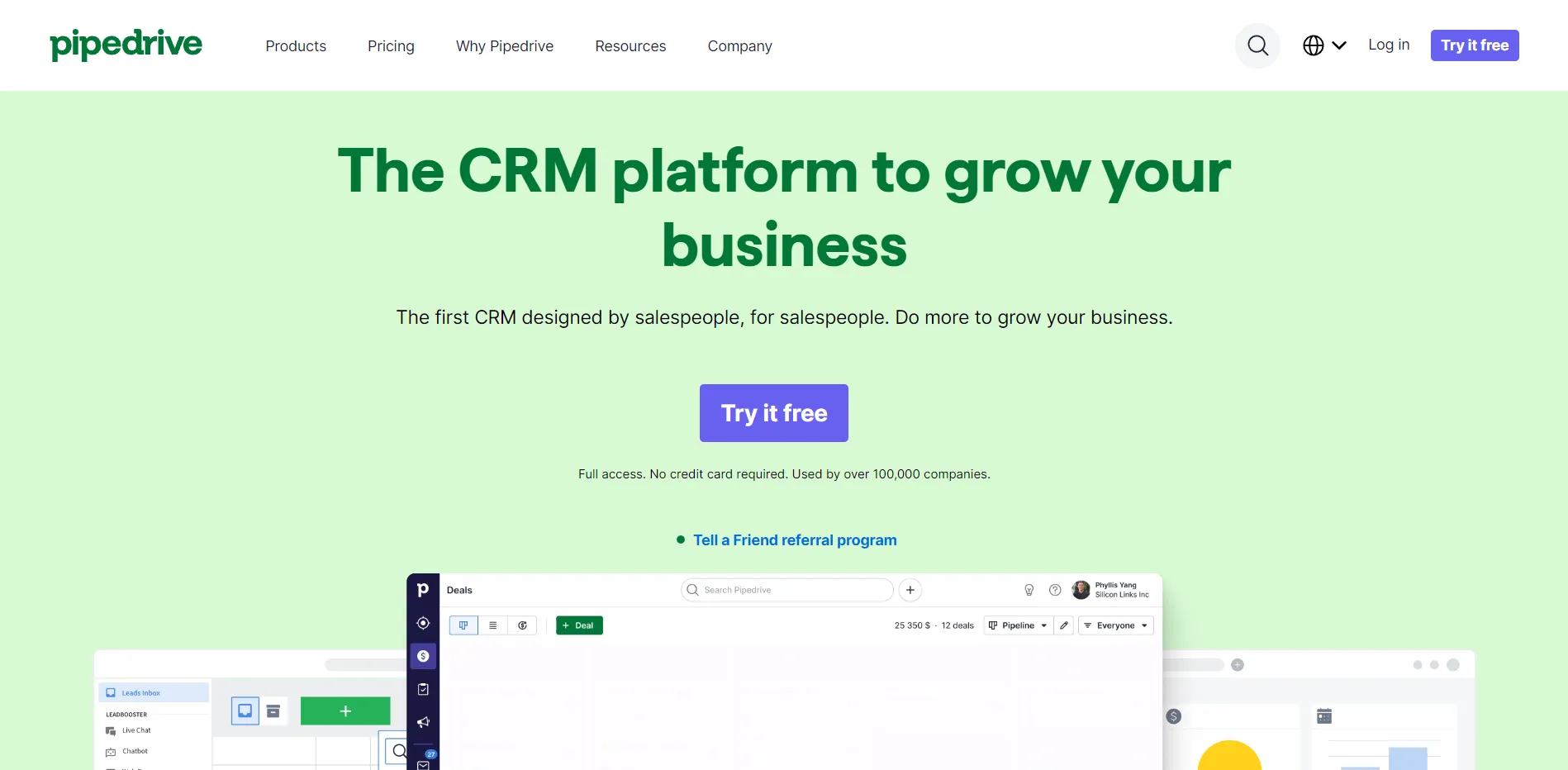
Pipedrive is a sales forecasting tool that uses artificial intelligence (AI) to help businesses predict future sales opportunities. It analyzes past sales data and uses predictive analytics to identify patterns and trends. With this information, businesses can make better-informed decisions about their marketing and sales strategies. Pipedrive can also help businesses identify potential customers and track their sales progress. This allows businesses to stay ahead of the competition and maximize their sales opportunities. In addition, by utilizing Pipedrive’s forecasting tool, businesses can more accurately predict future sales and plan their strategies accordingly.
b. Anaplan
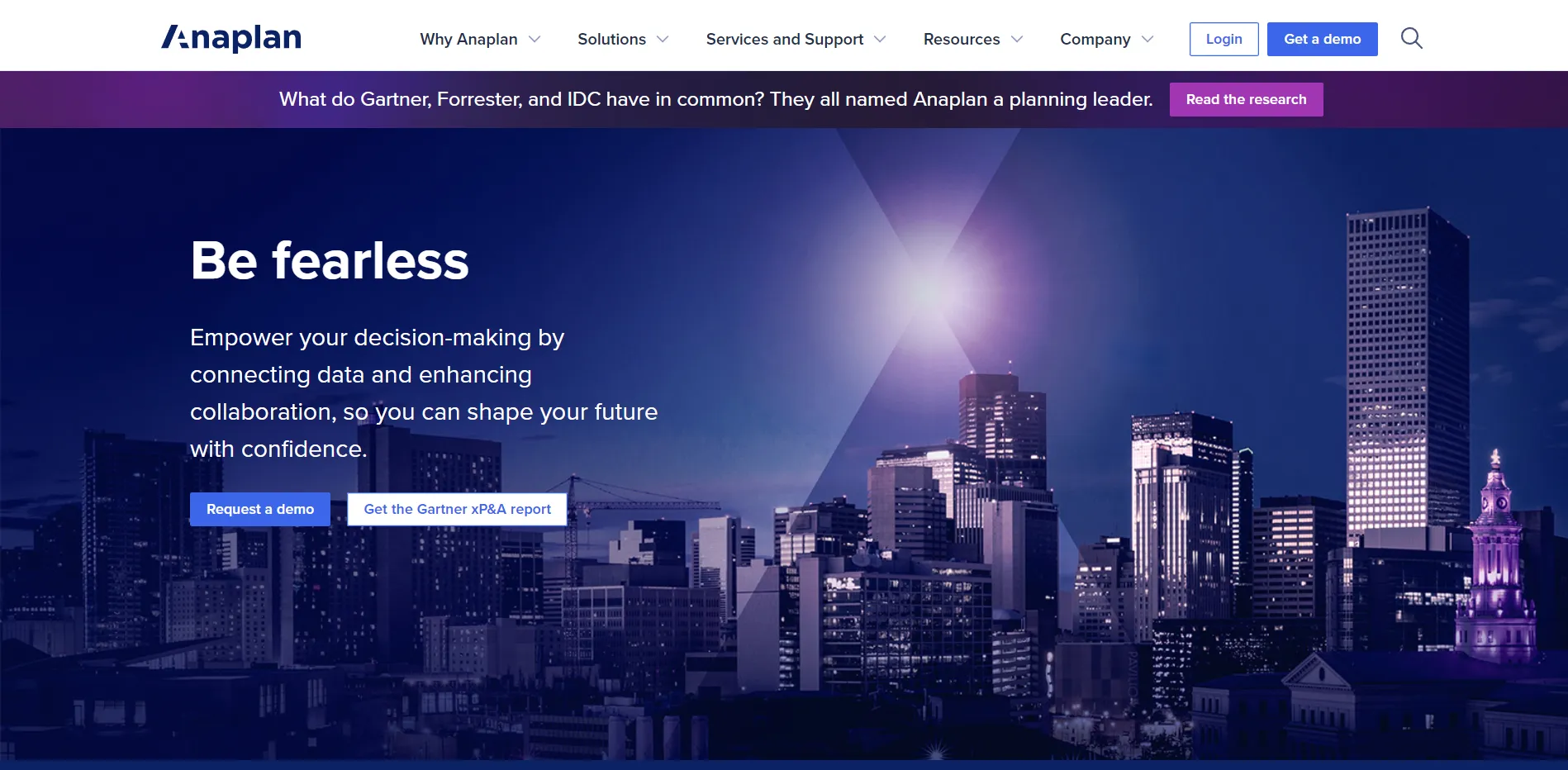
Anaplan Sales Forecasting is a tool designed to help businesses make more accurate and reliable sales forecasts. You can generate benchmarks for sales forecasting based on historical sales performance and data sourced from 3rd parties. It uses predictive analytics to generate insights into sales trends and customer behavior. With Anaplan Sales Forecasting, you can align real-time sales forecasts with models for sales planning and metrics.
As a result, businesses can understand their customer’s buying patterns, identify potential growth opportunities, and build a more accurate and up-to-date sales forecast. The tool is easy to use and helps make better decisions.
c. SPOTIO
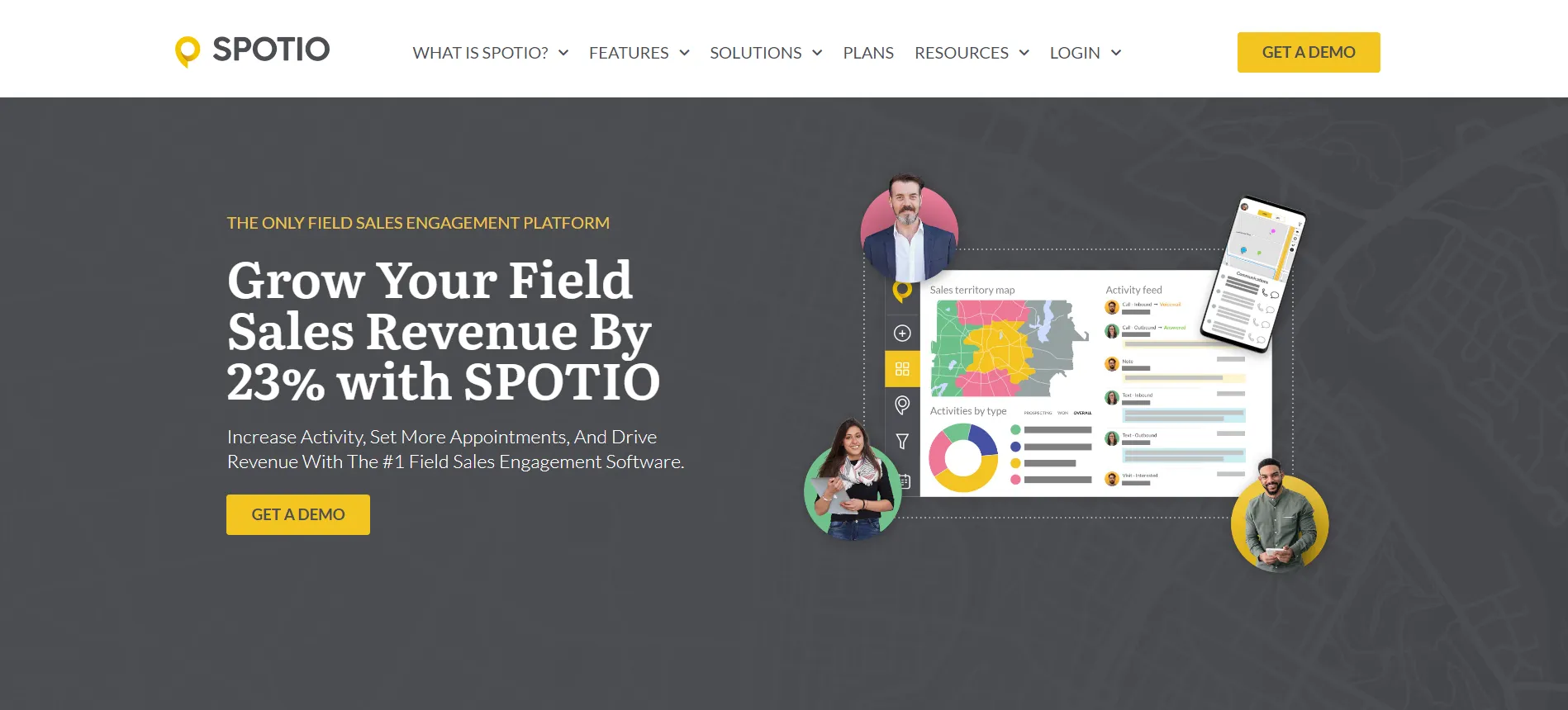
SPOTIO is a sales tracking software that provides clear insights and analytics to help you make the right decisions and achieve your goals. When you cannot gauge sales performance, you cannot understand whether your team is on the right path and know about the gaps in the process. With SPOTIO, it is possible to track all the data, giving real-time insights into your sales team’s performance. It is possible to track sales activities, pipeline metrics, and revenue data. Based on the inputs, you can build plans to achieve your sales targets. It is easy to generate custom reports and track metrics that are important. You can integrate the tool with other CRM, ERP, and other tools.
2. Sales Prospecting Tools
Here are a few tools for sales prospecting,
a. Lusha
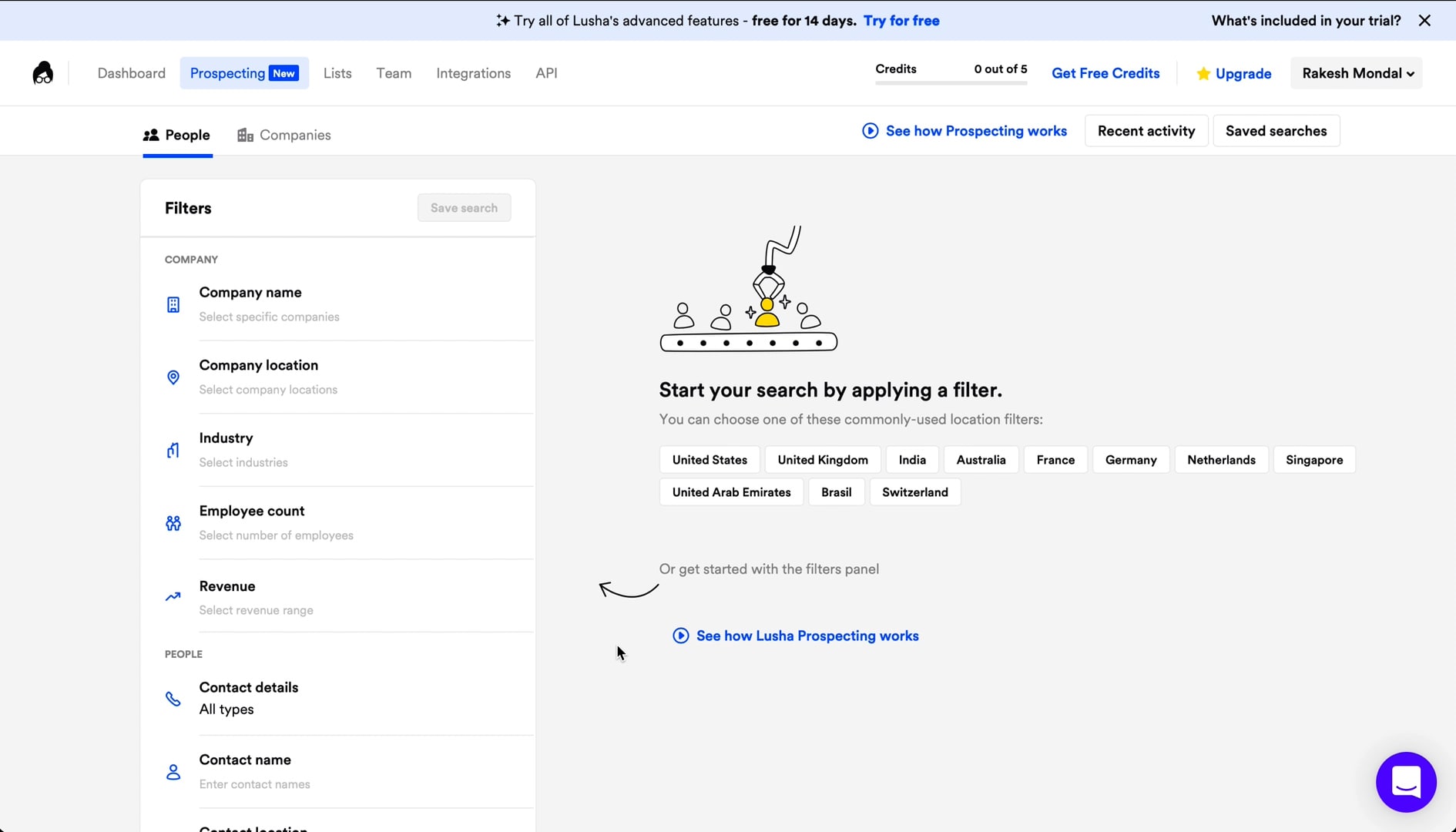
Lusha is a cutting-edge sales prospecting tool designed to streamline the process of finding and connecting with potential customers. It excels by providing users with accurate and up-to-date contact information, including phone numbers and email addresses, directly through its platform. What sets Lusha apart is its ability to integrate seamlessly with various CRM systems and its user-friendly browser extension, which allows sales professionals to easily access essential information on LinkedIn profiles and other websites.
b. Hunter
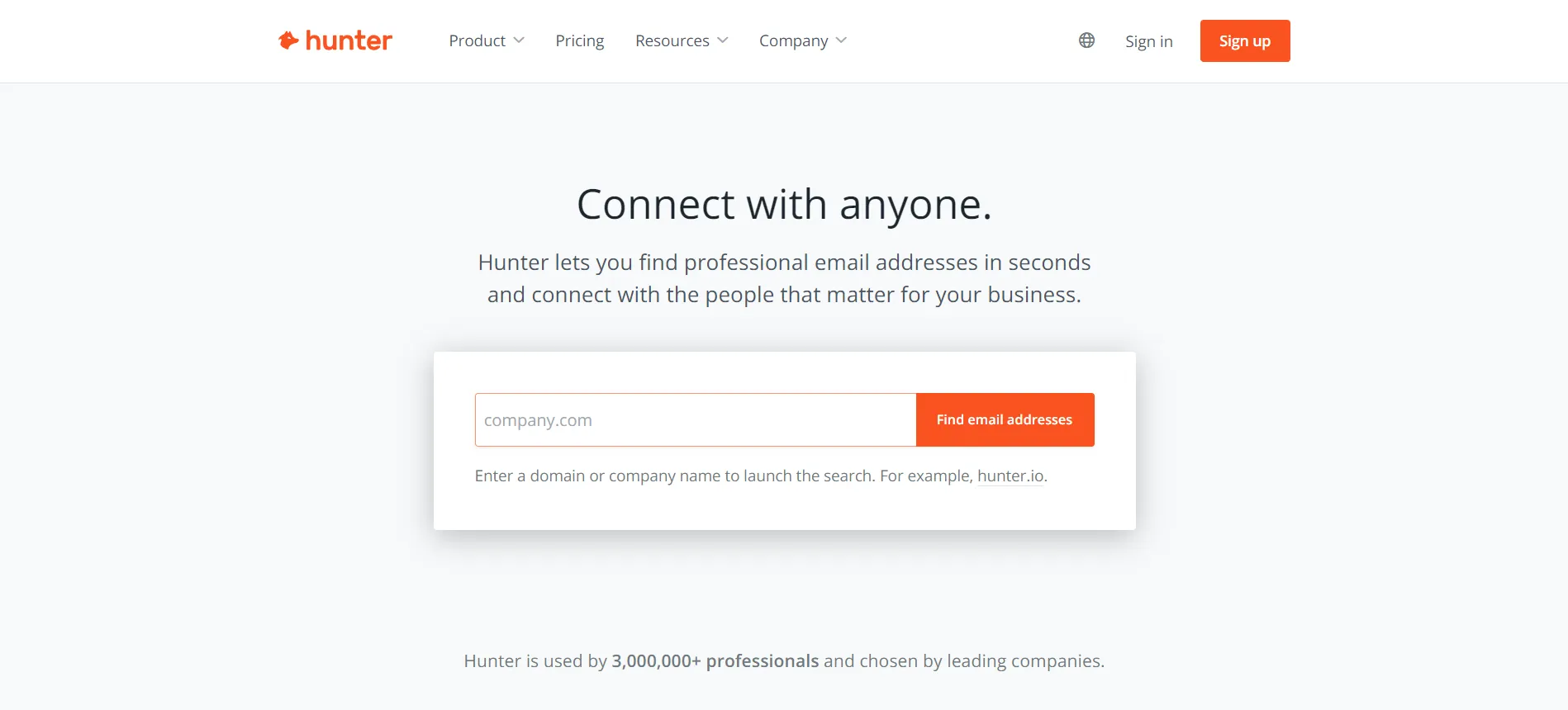
Hunter.io is a prospecting tool designed to help find the contact information for the people and companies they need to reach. It helps search for emails, phone numbers, and social media profiles across the web. Its powerful search engine scans millions of websites to locate the information users need. Hunter.io also provides users with insights on the domains they search for, such as a list of people working at the company and their job titles. This makes it easier for users to target the right person for their outreach campaigns. In addition, Hunter.io is available as a Chrome extension, making it easy for users to find contact information while browsing the web quickly.
c. Voila Norbert
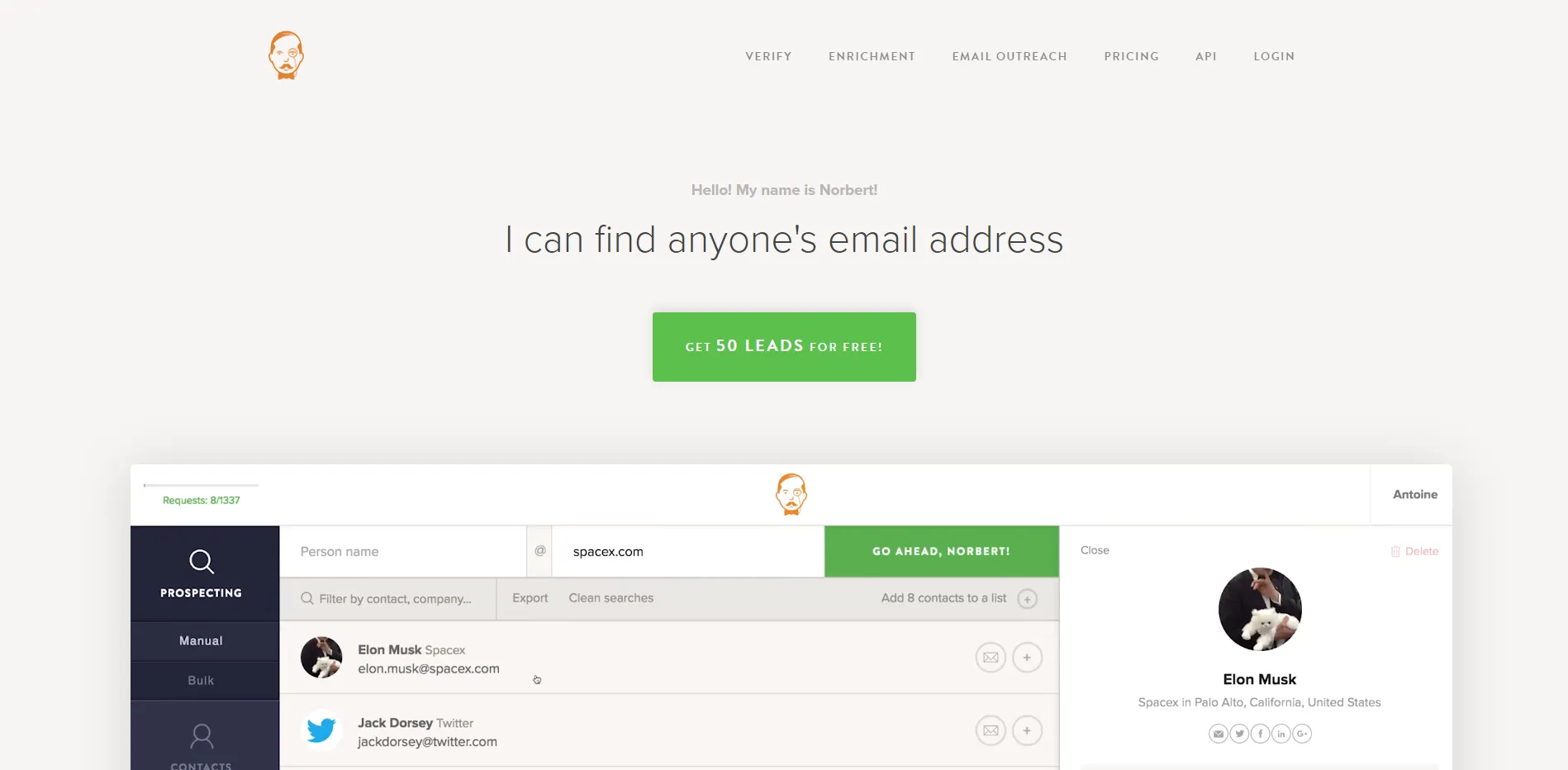
Voila Norbert is a prospecting tool designed to help marketers and sales teams find prospective customers quickly and easily. The tool crawls the web for contact information related to a particular company or organization. It can find key decision-makers’ email addresses, phone numbers, and mailing addresses, making it easier for businesses to reach out and make initial contact. You can even verify email addresses using the tool so that your sender score doesn’t get affected. Voila Norbert also integrates with popular CRM, email marketing, and sales automation software, allowing businesses to save time and effort when prospecting. All in all, it is an effective and efficient tool for any business looking to find new customers.
3. Sales Onboarding Tools
Here are a few tools to help sales professionals in onboarding,
a. MindTickle
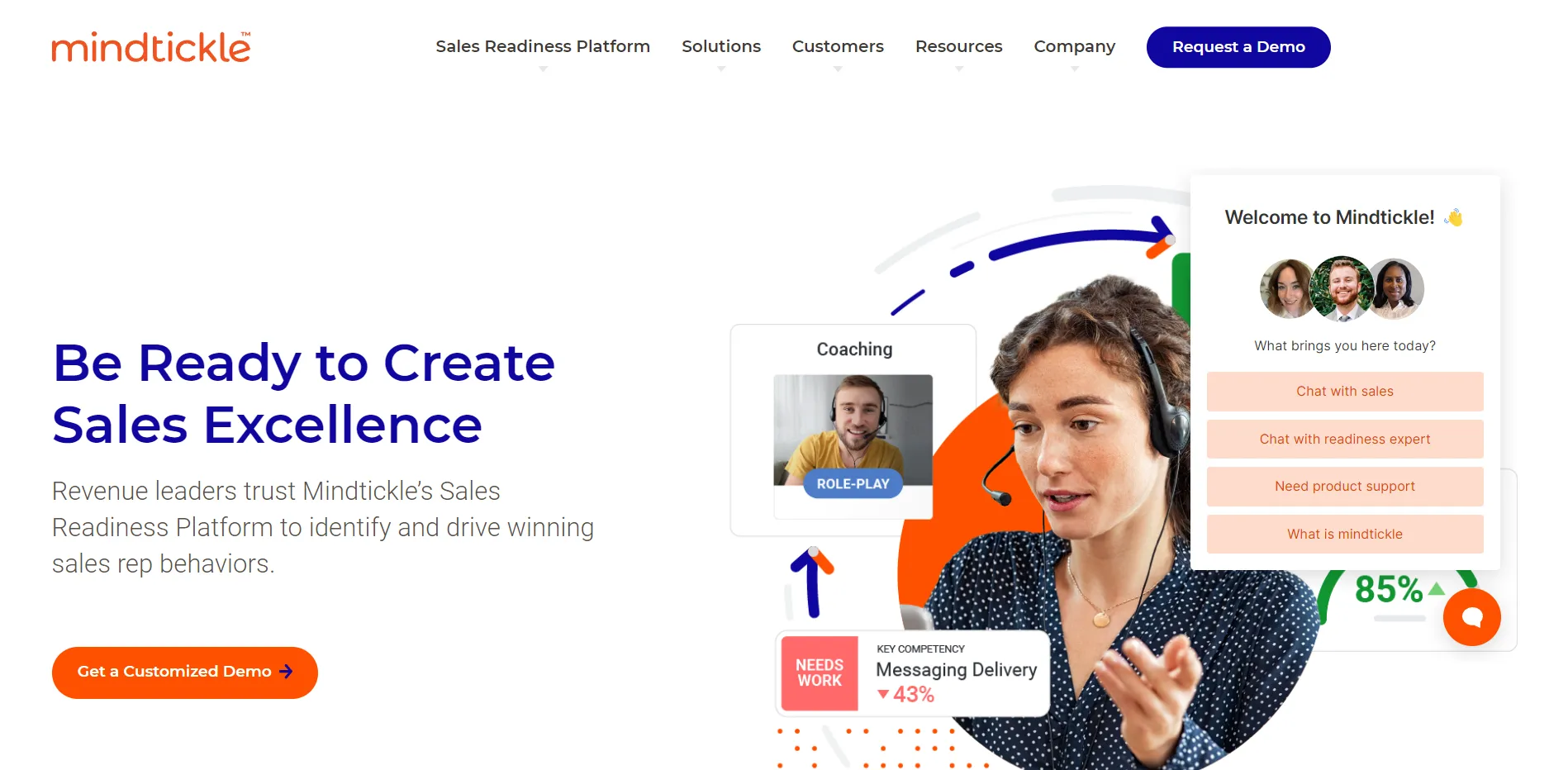
It is an innovative sales onboarding tool designed to help companies improve their onboarding process and increase employee retention. It provides a comprehensive suite of tools and resources you can tailor to the specific needs of sales teams. With MindTickle, companies can create customized onboarding plans that include online modules, interactive activities, and assessments. The platform also includes analytics tools that provide insight into onboarding progress and performance. With MindTickle, sales teams can ensure that new hires have all the knowledge and skills they need to be successful in their roles.
b. Allego
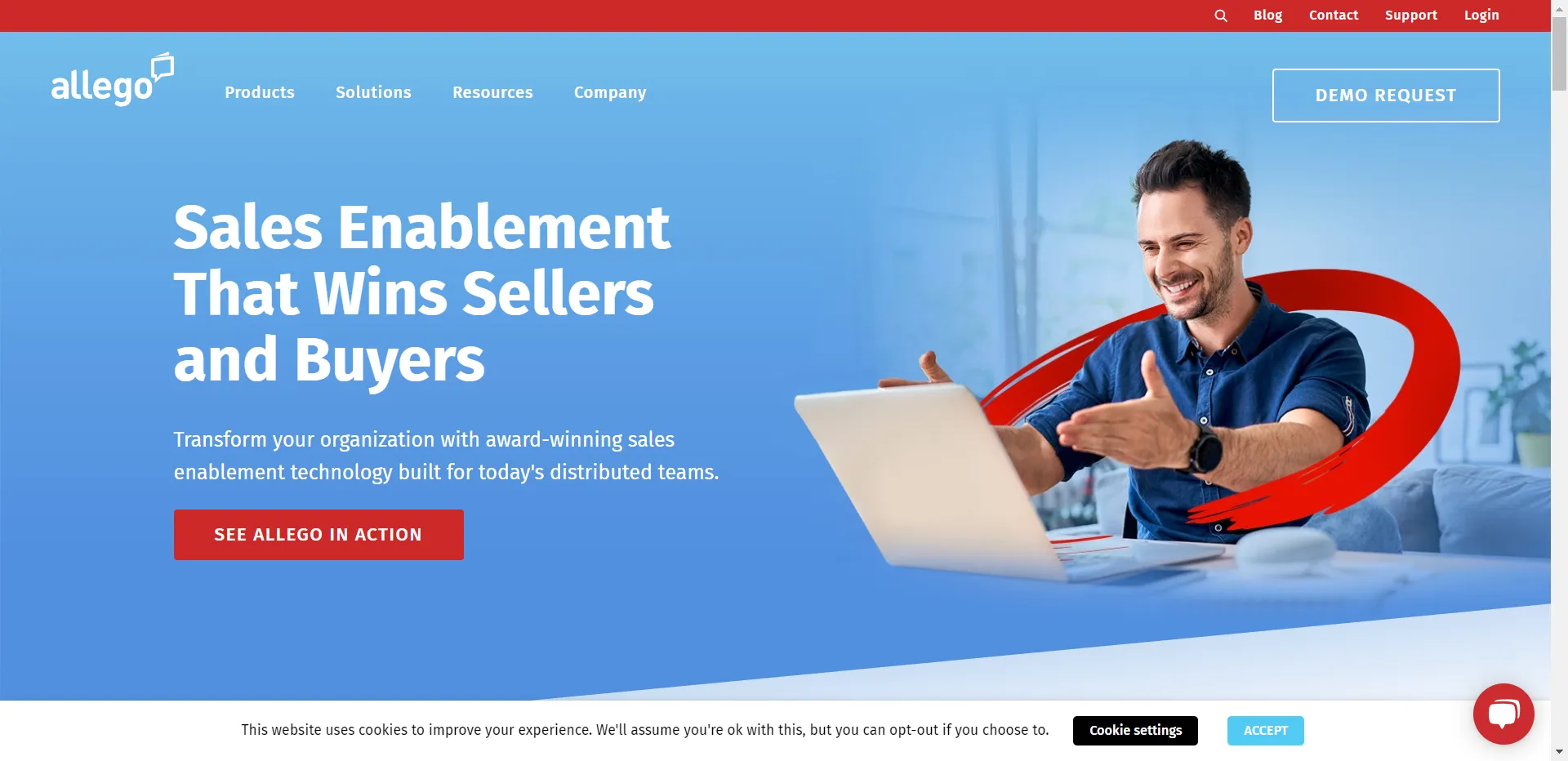
Allego is a sales onboarding tool that helps companies quickly and efficiently onboard their new sales team members. The tool includes various features to help streamline the onboarding process, including a library of training materials, automated assessments, and a centralized dashboard to track progress. It is possible to manage onboarding from practically anywhere using this tool. Allego also offers interactive exercises to help sales reps learn and improve their skills. By using Allego, companies can ensure that their new sales team members are well-trained and up to speed quickly, helping them hit their targets faster.
c. Brainshark
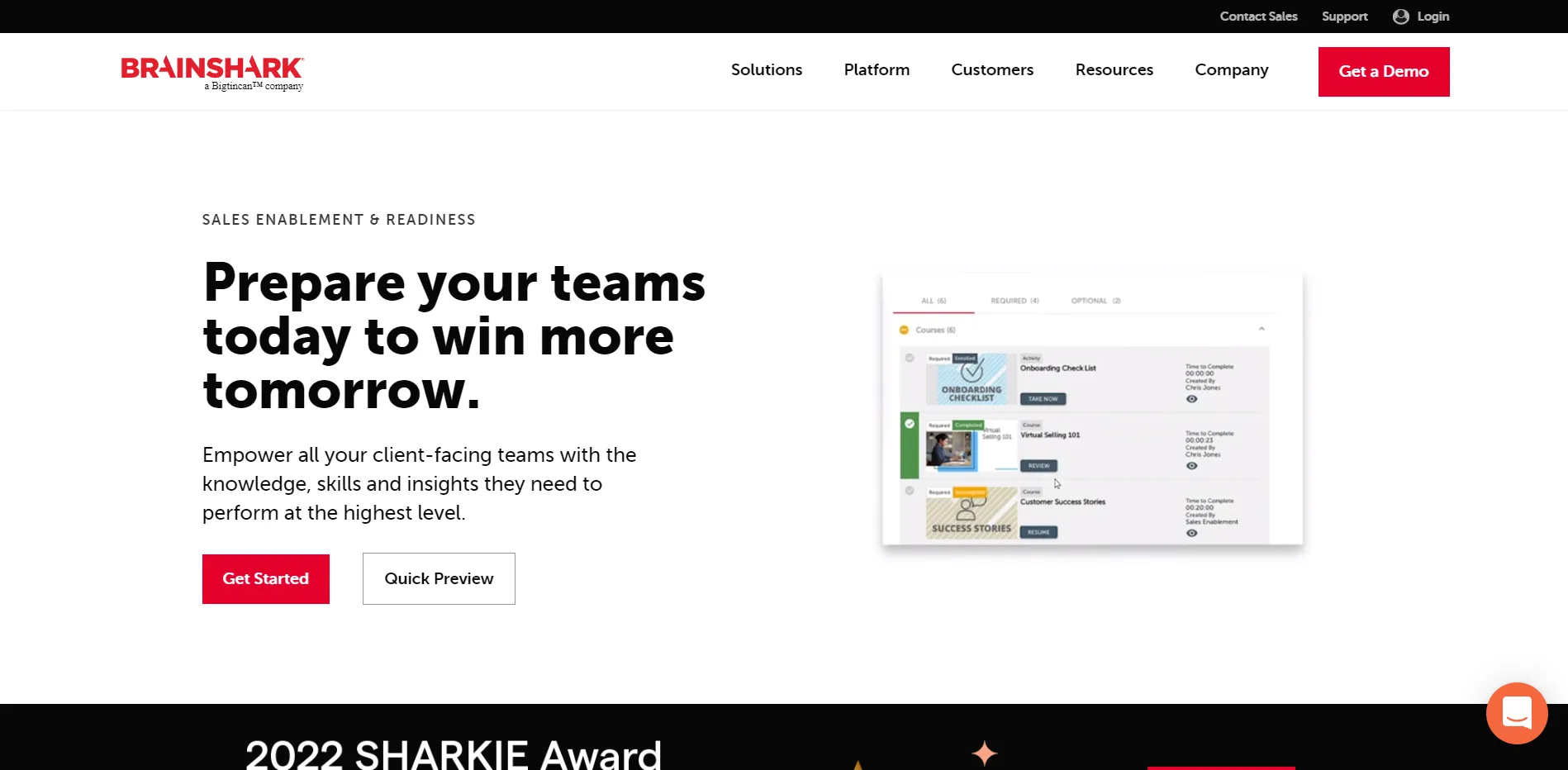
Brainshark is a sales onboarding tool that provides a comprehensive online sales training and onboarding platform. It allows businesses to create engaging and interactive content to introduce new sales reps to the organization and guide them through the onboarding process. The Brainshark platform includes various features, such as readiness scorecards to diagnose skill gaps. It also has video and text-based coaching assessments to offer. By leveraging the power of Brainshark’s online tools, businesses can get their sales reps ready for success.
4. Sales Engagement Tools
Here are a few sales engagement tools,
a. Mailshake
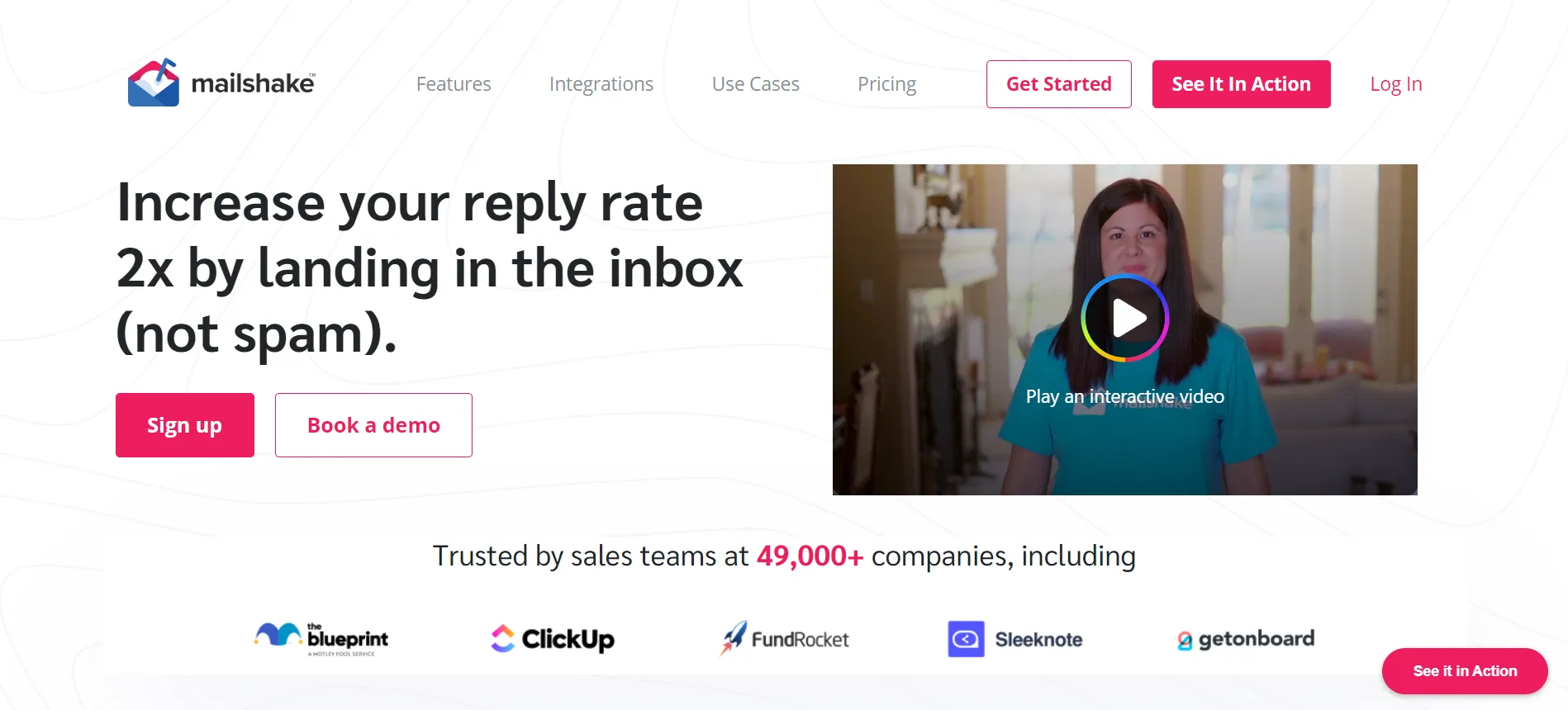
Mailshake is a sales engagement tool designed to help sales teams connect with prospects and close more deals. It streamlines the process of sending personalized emails, automation sequences, and follow-ups, allowing salespeople to be more efficient and effective. Mailshake also provides analytics that helps sales teams measure the success of their campaigns and adjust their strategy accordingly. With its intuitive interface and powerful features, Mailshake makes it easy for salespeople to manage their outreach and get more out of every interaction.
b. SalesBlink
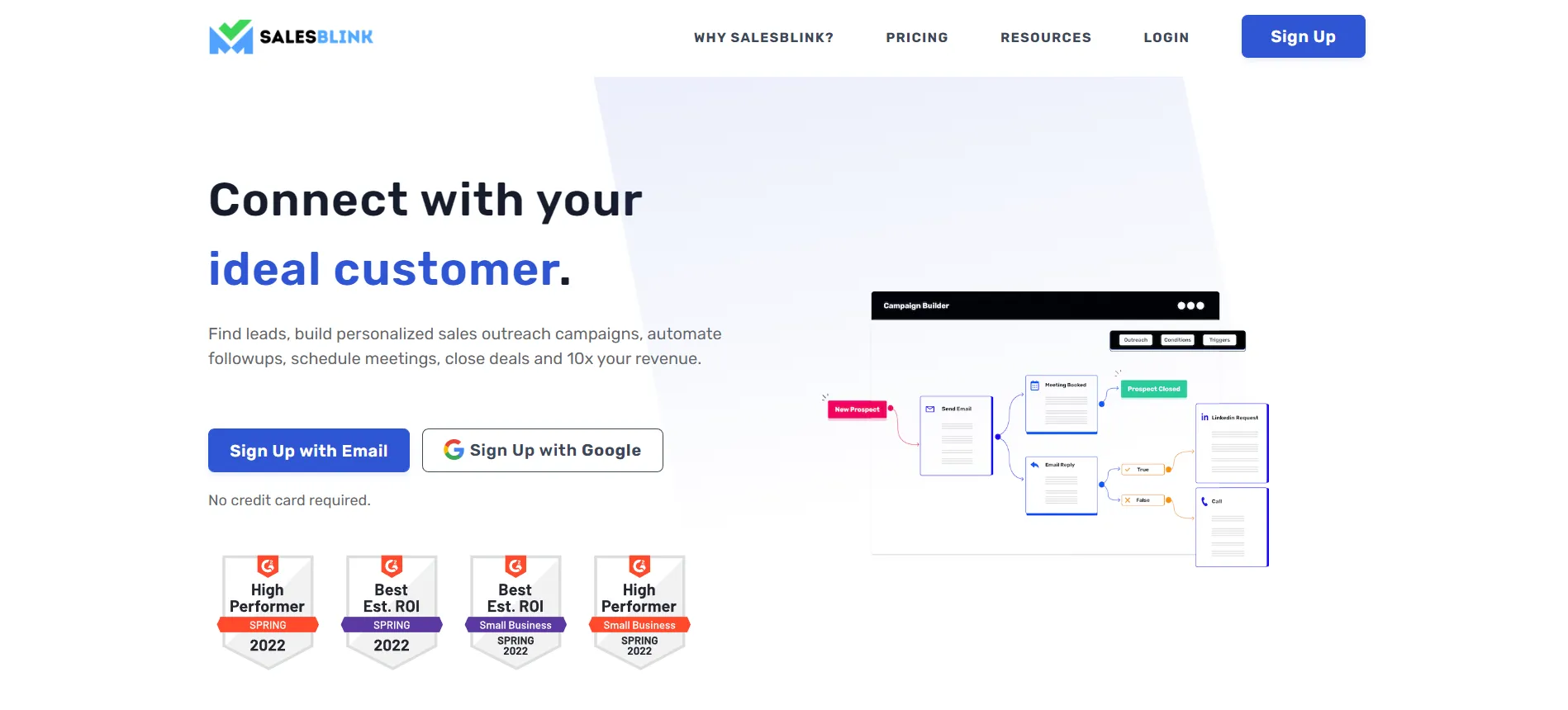
SalesBlink appears again! Being a complete sales automation tool helps with engagement as well. You can send personalized emails to prospects, create automated email sequences, and schedule follow-ups. In addition, it is possible to schedule meetings effortlessly and manage all your leads from a centralized inbox.
c. Salesloft
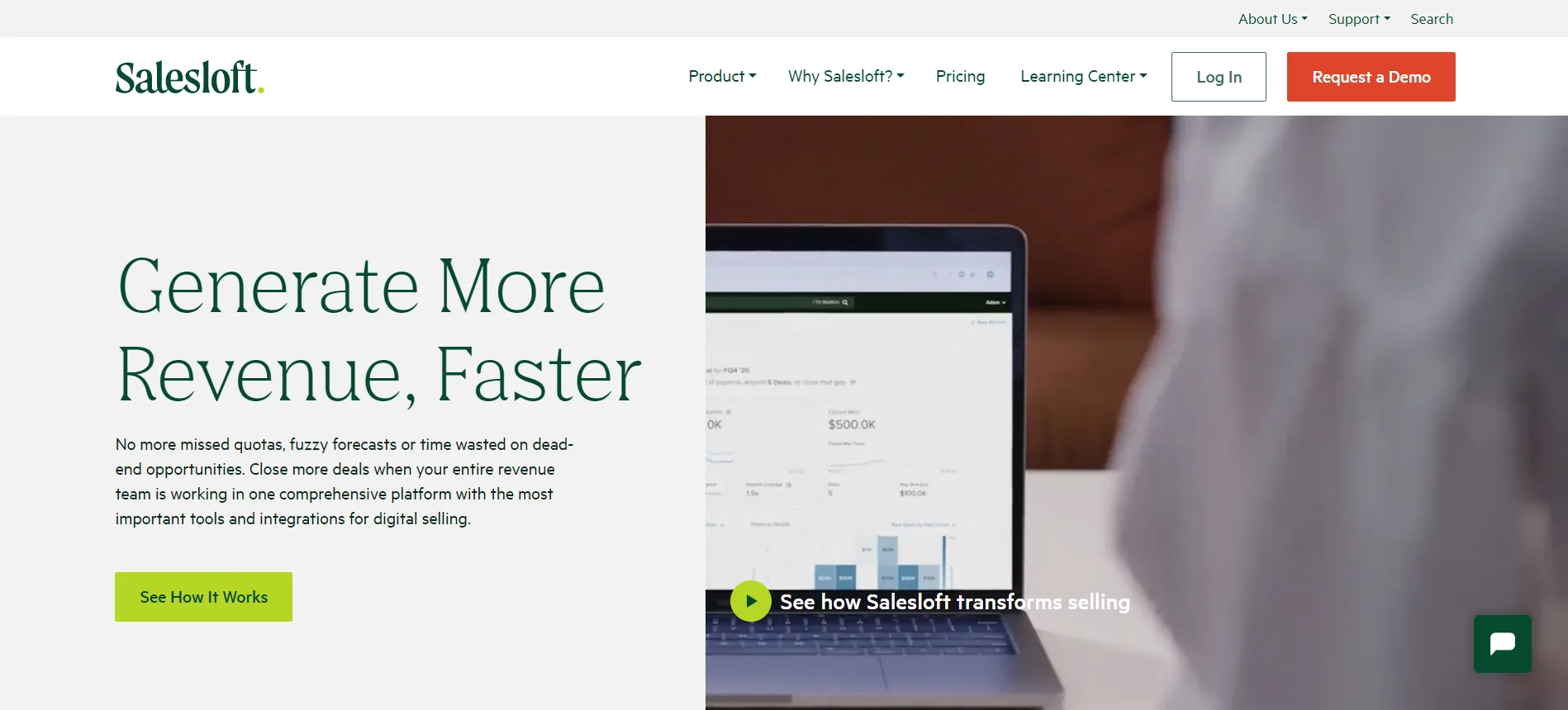
SalesLoft is a sales engagement platform that helps sales teams increase their productivity and close more deals. With SalesLoft, you can send personalized emails, track customer interactions, and access insights on improving their sales process. The platform also provides automated follow-up emails. All of these features come together to make SalesLoft an essential tool for any sales team that wants to maximize their productivity and close more deals.
The Future Of B2B Sales
The future of B2B sales is looking increasingly digital, with businesses turning to technology to streamline the sales process and improve customer experience. Automated sales tools are becoming more popular, allowing businesses to analyze customer data better and tailor their sales strategies accordingly.
Artificial intelligence is also increasingly prominent in B2B sales, allowing sales teams to predict customer behavior and provide personalized customer experiences.
Today you have BlinkGPT for B2B sales helping you with the different stages of the sales process. It definitely is a path-breaking advancement that is changing the way salespeople work.
Additionally, businesses are leveraging social media platforms and other online forums to reach potential customers, offering more opportunities for engagement and customer loyalty.
Finally, e-commerce is playing a more significant role in B2B sales, with businesses able to connect with customers worldwide and accept payments online. As technology continues to evolve, the future of B2B sales will continue to be digital and focused on providing customers with a seamless, personalized experience.
Become A Pro At Sales!
We have now come to the end of this B2B sales guide. As you have seen, the guide covers everything about B2B sales in detail so that you don’t have to go from pillar to post to gather information. By following the sales techniques provided, you’ll be able to increase your sales and grow your business. Moreover, using the tools mentioned above will simplify your tasks and save you time.
So, what are you waiting for? Get started today and take your sales to the next level with this B2B sales guide! And don’t forget to thank us once you start seeing results.
FAQs
The skills required for B2B sales are relationship building, strong communication & negotiation skills, effective listening, strategic thinking, time management, being detail-oriented & having a strong understanding of the product or service.
You can ask customers about the pain points they wish to alleviate, what makes them do so, their attempts to solve them, and more. Doing so will help you know the prospect’s needs and solve their problem faster.
Finding qualified leads that are likely to convert, getting the prospect’s attention, handling long sales cycles, and retaining existing customers are most of the toughest challenges you can face in B2B sales.







